Be capable of closeness
Be capable of closeness
Be capable of closeness
Be capable of closeness
Be capable of closeness

Martine was on the metro in one of the main European cities; all the passengers were absorbed in their phones. She thought how the people may have been connected virtually but were really trapped in isolation and said to herself, ‘Are we no longer able to look each other in the eye?’
This has become an everyday experience, especially in societies which are rich in material goods but increasingly poor in human relationships. However, the Gospel always offers its original, creative proposal, to “make all things new”[1].
In the long dialogue with the lawyer who asked Jesus what to do to inherit eternal life [2], Jesus replied with the famous parable of the Good Samaritan: a priest and a Levite, respected figures in the society of the time, saw a man assaulted by robbers and lying on the roadside, but they passed him by.
But a Samaritan while travelling came near him; and when he saw him, he was moved with pity.
To the lawyer who was very familiar with the divine commandment to love one’s neighbour [3], Jesus gave the example of a foreigner who was considered to be a schismatic and an enemy. The man saw the wounded traveller, but he allowed himself to be moved by compassion, a feeling that comes from within, from deep in the human heart. So he interrupted his journey, approached the man and took care of him.
Jesus knows that every human being is wounded by sin and his very mission is: to heal hearts with God’s mercy and gratuitous forgiveness, so that they too may be capable of closeness and sharing.
‘…To learn to be merciful like the Father, perfect like him, we must look at Jesus, the full revelation of the Father’s love… Love is the absolute value that gives meaning to everything else… and finds its highest expression in mercy. Mercy helps us to see the people we live with each day in a new light, in our family, at school, at work, without remembering their faults and mistakes. It helps us not to judge, but to forgive the wrongs we have suffered. Indeed, to forget them’ [4].
But a Samaritan while travelling came near him; and when he saw him, he was moved with pity.
The final and decisive response comes as a clear invitation: ‘Go and do likewise’[5]. This is what Jesus repeats to anyone who welcomes his Word: to become a neighbour by taking the initiative to ‘touch’ the wounds of those encountered each day along the paths of life.
To live evangelical closeness, first of all we must ask Jesus to heal us of the blindness of prejudice and indifference, which prevent us from seeing beyond ourselves.
Then, from the Samaritan, we can learn the ability for compassion which moved him to put his own life on the line. Let’s imitate his readiness to take the first step toward others, his willingness to listen to them, to make their pain our own, free from judgment and from the anxiety of ‘wasting time.’
This is what happened to a young woman from Korea: ‘I tried to help a teenager who wasn’t from my culture and whom I didn’t know well. Even though I didn’t know exactly what to do or how, I found the courage to try and to my surprise, by offering that help, I found that my own inner wounds had been healed.’
This Word offers us the golden key for living out a Christian humanism. It makes us aware of our common humanity, in which the image of God is reflected and it teaches us to courageously overcome the limits of physical and cultural ‘closeness.’ From this perspective, it becomes possible to expand the boundaries of ‘us’ to the horizon of ‘everyone’ and to rediscover the very foundations of social life.
Edited by Letizia Magri & the Word of Life Team
Foto © John-Lockwood – Unsplash
[1] Cf. Rev 21,5.
[2] Cf. Lk 10, 25-37.
[3] Dt 6,5; Lv 19,18.
[4] (C. Lubich, Word of Life, June 2002, in Words of Life, edited by Fabio Ciardi, Città Nuova, Rome, 2017, p. 659)..
[5] Lk 10,37.

Every day we see a great deal of suffering all around us and this can make us feel
overwhelmed and helpless if we do not draw upon deep human values. Sometimes, however,
the answer arrives on WhatsApp. This is whath appened to a community that tries to build
unity in a small town in Italy: “…In the hospital where I work there is a young man, a foreigner,
who is completely alone and dying. Maybe someone could spend a few minutes with him, to bring
some dignity to this situation?” This request was a shock: the responses followed quickly. The
messages from those who were with the man in his last few hours said, “At his bedside we
immediately saw that he was receiving care at the right time and that it was attentive and loving.
Really there was nothing for us to to do except be there: he was in a coma and could not benefit
from our presence.”
Was staying at the man’s bedside unnecessary and a waste of time? In those few
hours a small community, inside and outside the hospital, accompanied and brought
meaning to that situation. Who knows if a mother will be able to mourn that son in his own
country. Surely his “passing” was not in vain for those who could love that young man who
was no longer unknown. Compassion is a feeling that comes from within, from the depths
of the human heart. It makes us capable of interrupting our busy daily routine of schedules
and appointments and take the initiative to approach others and gaze at them with care,
unafraid to “touch” their wounds.
Chiara Lubich explains it with striking simplicity: “Let us imagine that we are in their
situation and treat them as we would like to be treated in their place. Are they hungry? We think – I
am hungry too. And let’s feed them. Is that person experiencing injustice? I am suffering injustice
too! And let us offer words of comfort and share their sorrows: let’s persevere until they feel
enlightened and uplifted. We will slowly see the world around us change.“ 1.
African wisdom also confirms this in a proverb from the Ivory Coast: “The person who
welcomes a stranger hosts a messenger.”
This Idea offers us a method of living out true humanism: it makes us aware of our
common humanity in which the dignity inherent in every man and woman is reflected. It
also teaches us to courageously go beyond the understanding that “closeness” is
determined by physical and cultural contexts. Thinking in this way, it is possible to expand
the boundaries of “us” to the horizon of “all” and rediscover the very foundations of social
life. When we feel we are succumbing to the impact of the suffering all around us, it is
important to draw upon the help of friends who share our views and accompany us through
life and so allow ourselves to be healed. Let’s remember, as psychiatrist-psychotherapist
Roberto Almada says, “If the good people give up the battle because of fatigue, our common
humanity will run the greatest of risks: value impoverishment.”2.
1. Chiara Lubich, The Art of Loving
2. R. Almada, Il burnout del buon samaritano, Effatà editrice, 2016
Photo: © Alexandra_Koch en Pixabay
THE IDEA OF THE MONTH is currently produced by the Focolare Movement’s “Centre for Dialogue with People of Non religious Beliefs”. It is an initiative that began in 2014 in Uruguay to share with non-believing friends the values of the Word of Life, i.e. the phrase from Scripture that members of the Movement strive to put into practice in their daily lives. Currently, THE IDEA OF THE MONTH is translated into 12 languages and distributed in more than 25 countries, with adaptations of the text according to different cultural sensitivities. dialogue4unity.focolare.org
Allow yourself to be wounded by compassion
Allow yourself to be wounded by compassion
Allow yourself to be wounded by compassion
Work for a united world
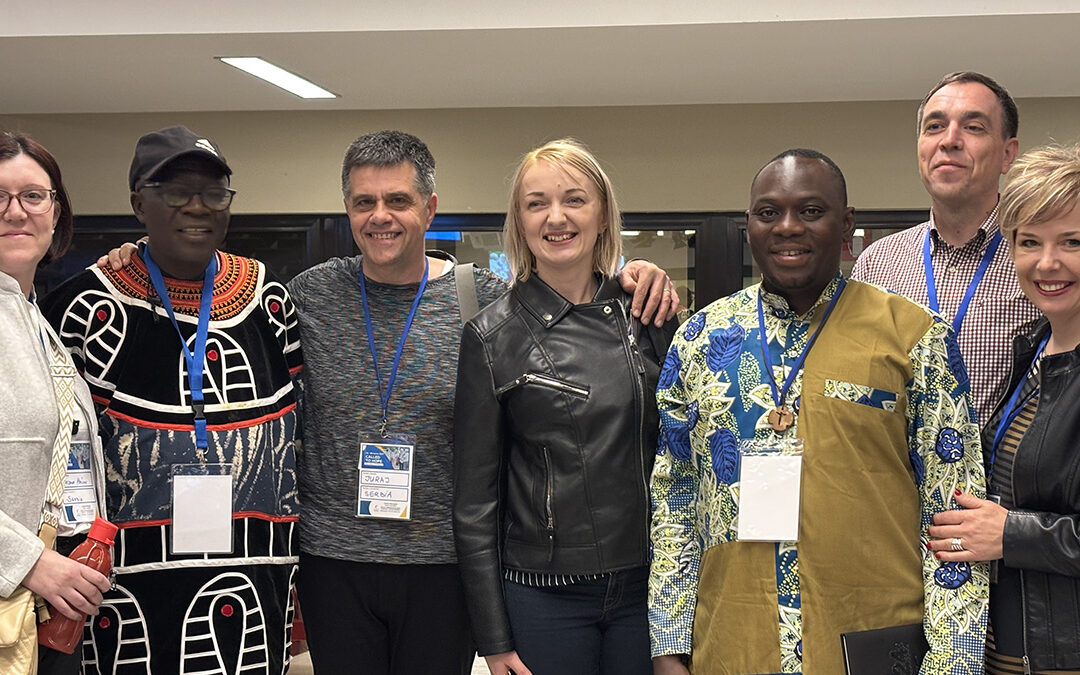
On 29th June, 1967, Pope Paul VI invited Patriarch Athenagoras to send some representatives to Rome. Since then, the leaders of the two Churches have exchanged visits: on 29th June, the feast of Saints Peter and Paul, a delegation from the Patriarchate of Constantinople comes to Rome – at times, the Patriarch himself has come; while on 30th November, the feast of Saint Andrew, a delegation from the Vatican travels to the Patriarchate on behalf of the Pope. According to Tradition, Saint Peter, bishop of Rome and Saint Andrew, founder of the episcopal see of Constantinople, were brothers. These visits are a reminder for these two Churches that see themselves as sisters, to commit to reconciliation and to strengthen the bonds of solidarity.
On this feast day, which is meaningful for the journey toward unity among the Churches, we are publishing a video with reflections gathered at the conclusion of the Conference entitled “Called to hope – Key players of dialogue” promoted by Centro Uno, the international secretariat for Christian unity of the Focolare Movement. The event brought together 250 people from 40 countries and 20 Christian Churches, with over 4000 people worldwide following it via streaming.
Turn on subtitles and pick the language you want (International Version)
Give witness to love
Be capable of loving!
Start from your heart!
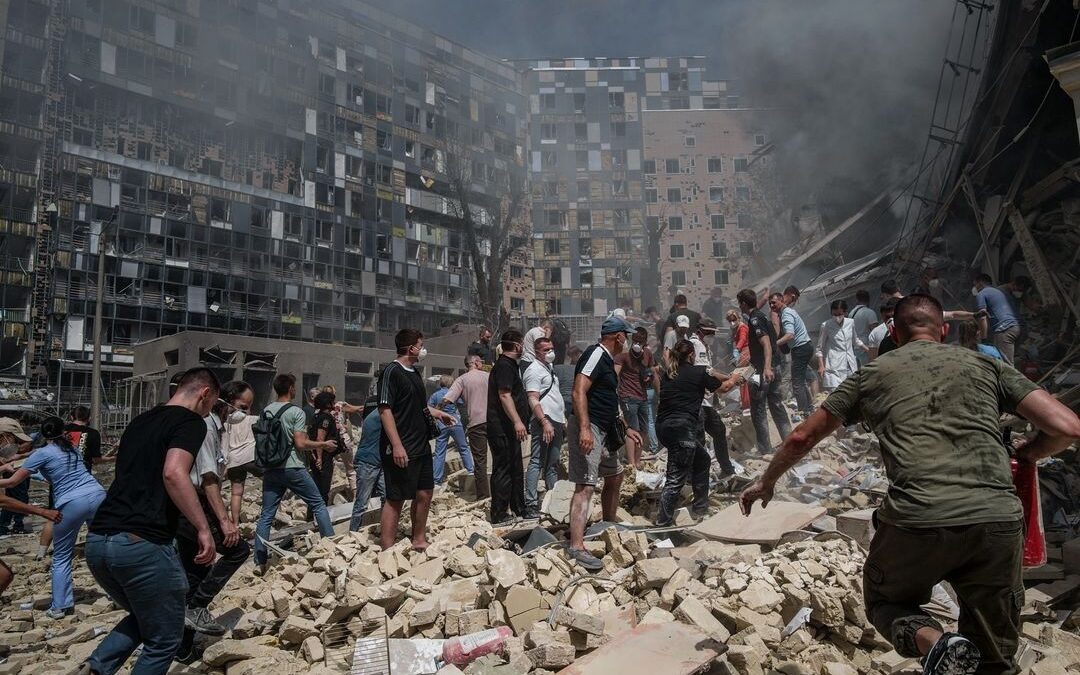
I couldn’t understand how anyone could give life to a young person, have him worn out by studies and sacrifices, in order to prepare him for an operation, in which he would have to kill strangers, unknown, innocent people and in turn, he would be killed by others to whom he had done no harm. I saw the absurdity, the stupidity and above all the sin of war: a sin made more acute by the excuses used to justify it and by the futility with which it was decided.
The Gospel, long meditated upon, taught me that to do good, not to kill was a fundamental duty; to forgive, not to take revenge. And reason itself gave me a sense of how absurd it was to engage in a conflict where victory did not go to the just, but to those with more cannons; not to justice, but to violence.
In the “radiant May” of 1915, I was called to arms. […]
So many bugles, speeches and flags! All this only deepened within me the sense of revulsion for those clashes, in which governments, entrusted with the public good, carried out their task by slaughtering the children of the people, hundreds of thousands and by destroying or allowing the destruction of the assets of the nation: the common good.
How stupid it all seemed to me! And I suffered for the millions of people, who were forced to believe in the sanctity of those murders, a sanctity also attested by clerics who blessed the cannons destined to offend God in His masterpiece of creation, to kill God in His image, to carry out fratricide among baptized brothers.
“I saw the absurdity, the stupidity
and above all the sin of war…”
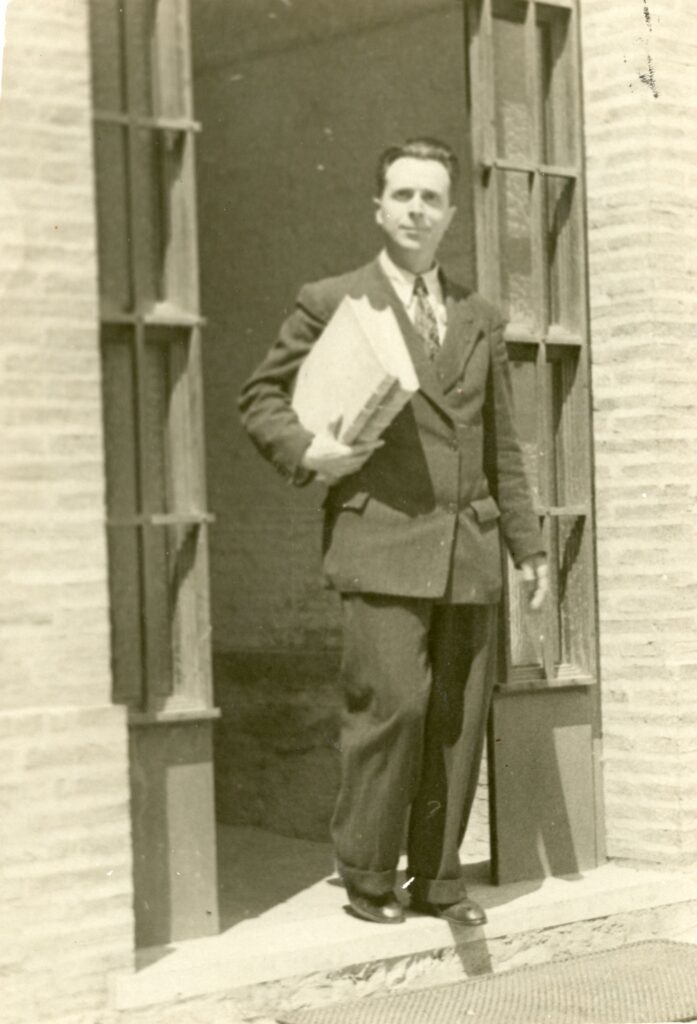
As a recruit I was sent to Modena, where there was a kind of university for the training of warriors and commanders. Coming from the world of Virgil and Dante, the study of certain manuals that taught how to deceive the enemy in order to kill him, had such an effect on me that, in an act of reckless defiance, I wrote in one of them: “Here we are learning the science of imbecility”. I had a very different concept of love of country. I understood it as love and love means service, the pursuit of good, the promotion of well-being, to provide a happier coexistence: for the growth and not for the destruction of life.
But I was young, and I did not understand the reasoning of the older generation, who didn’t really want to understand. They distracted themselves with parades and shouted slogans to numb their senses.
[…]
After a few weeks, having completed my training in Modena, I returned home briefly before departing for the front. I hugged my mother and father, my brothers and sisters (we rarely embraced in my family) and boarded the train. From the train I saw the sea for the first time, much wider than the Aniene River, it felt as though I had fulfilled one of life’s duties. After three days, I reached the trenches along the Isonzo and joined the 111th Infantry Regiment.
The trench. In it, from school I entered life, between the arms of death and cannon fire. […]
If I fired five or six shots, into the air, I did so out of necessity: I never aimed my rifle towards the enemy trenches, for fear of killing a child of God. […]
If all those days spent, in the bottom of the trenches, watching reeds and tufts of brambles and bored clouds and shining blue sky, had been spent working, we would have produced enough wealth to meet all the demands for which the war was being fought. Clearly: but that was reason and war is the opposite of reason.
Igino Giordani
Memorie di un cristiano ingenuo, Città Nuova 1994, pp.47-53
Compiled by Elena Merli
Photo: © ZU via Fotos Públicas
Listen to the voice of your conscience
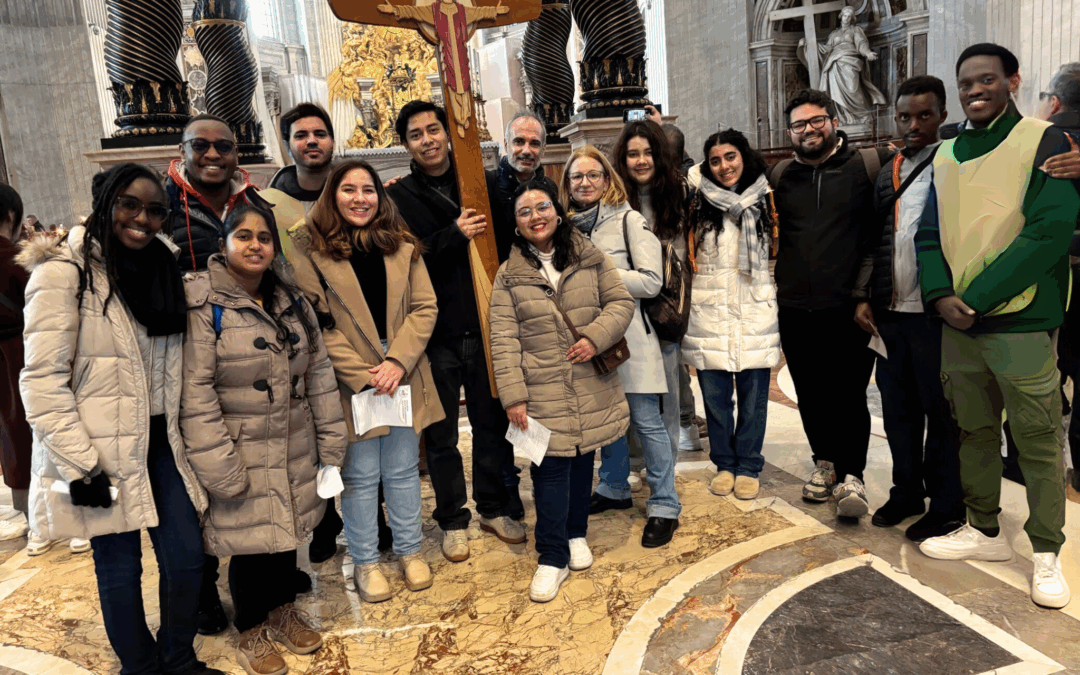
On the occasion of the Jubilee of Youth, from 29th July – 1st August 2025, the young people of the Focolare Movement are offering a special programme for fellow pilgrims: four days of spirituality, sharing, testimonies, prayer, catechesis, fun and walking together!
It is a unique opportunity to set out on a journey through places full of history and spirituality, meeting many people along the way and growing in faith and hope.
Each day is built around a key word, a stop that includes a time for reflection and prayer and a spiritual focus rooted in the Focolare charism of unity, with testimonies and songs so that the Jubilee of Youth may be lived as a journey based on 4 key ideas: pilgrimage (a journey), holy door (an opening), hope (looking forward) and reconciliation (making peace). For those who wish, there will be catechetical sessions at the Focolare meeting point led by Tommaso Bertolasi (philosopher), Anna Maria Rossi (linguist) and Luigino Bruni (economist).
The Pilgrimage to the Seven Churches
The programme follows the historical itinerary used by pilgrims since the 16th century. The Pilgrimage of the Seven Churches was designed by St. Philip Neri. It is a journey of faith and fraternal communion, made up of prayer, songs and reflections on the Christian life.
The stages of this pilgrimage are seven symbolic places in Rome: the Basilicas of: St. Sebastian, St. Paul Outside the Walls, St. Mary Major, St Peter’s, St. Laurence, the Holy Cross in Jerusalem and St. John Lateran. The total route is 20 kms. Over the centuries, thousands of young people and adults have engaged in this experience. Participants will also join the main events of the Jubilee of Youth, including: the moment of reconciliation at the Circus Maximus and the meetings with Pope Leo XIV during the vigil and at the final Mass at Torvergata which was the location of the vigil and the Youth Mass of the Jubilee of 2000. For those who can stay longer, on 4th August, there’s an opportunity to visit the International Centre of the Focolare in Rocca di Papa
This programme offers many opportunities to experience the Jubilee, to discover Rome and to live a moment of deep faith and spirituality together. Along the route, each participant will receive a Pilgrim’s Passport. In every church they visit, they’ll be invited to write a single word describing what they experienced or what struck them most. At the end, this will become a unique keepsake of their journey.
Are you ready? Safe journey!
For more information: sgmu@focolare.org – +39 338 159 3455.
Lorenzo Russo
Love is made of patience
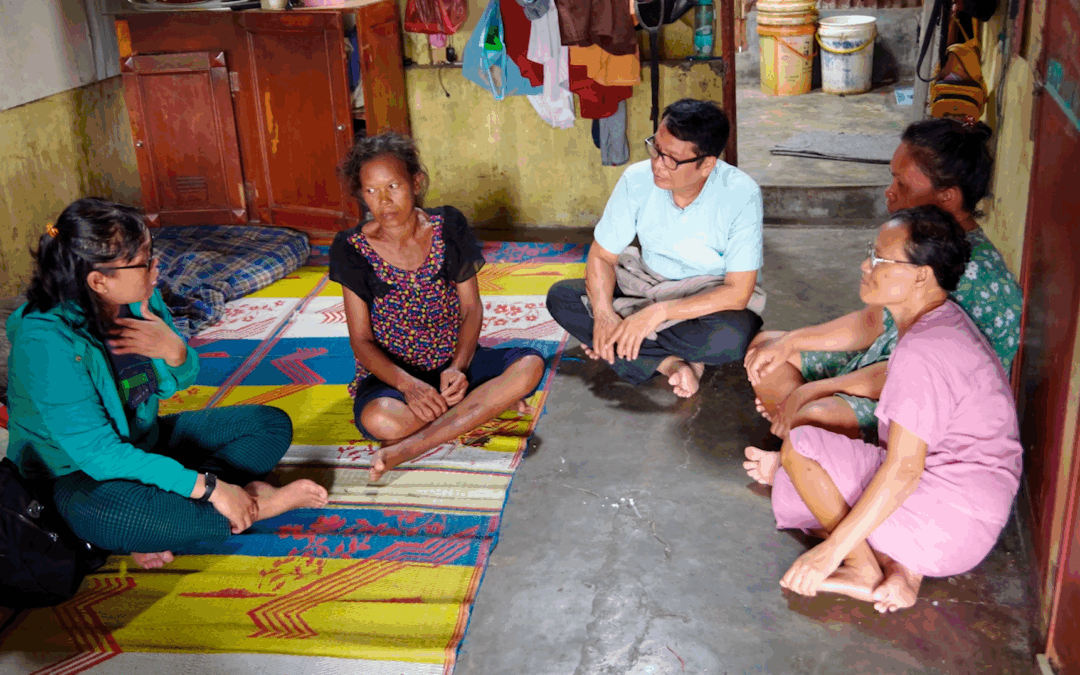
Enable subtitles and select your preferred language.
Adhere to God’s plan
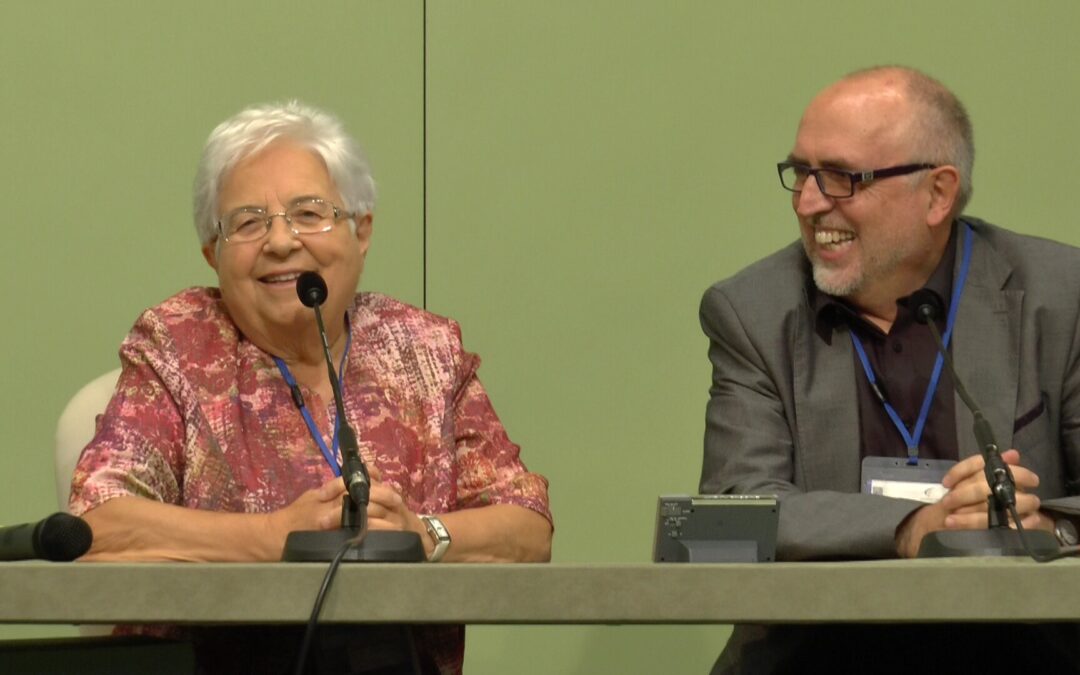
The first General Assembly of the Focolare Movement without the foundress was held in July 2008. In fact, Chiara Lubich had died a few months earlier, on the 14th of March. An air of uncertainty hung over the already emotional and question-filled atmosphere as to who should succeed Chiara in leading the Movement. It seemed obvious to think of Chiara’s first companions, now elderly, but at least some of them were still capable of leading this first post-foundation phase.
During the first session of the Assembly, there was a talk from a legal perspective on a topic relevant to the Assembly given by Carlos Clariá, an Argentinian lawyer and general councillor, and Maria Voce, for many years secretary to the central delegate Gisella Cagliari. I remember that I was sitting next to the well-known theologian Piero Coda. When they concluded their talk, I told him rather boldly: “Here is our new president”. The truth was that the way she had explained things had impressed me greatly.
Maria Voce (Emmaus) was elected on the third ballot, not without a certain “suspense”. A new stage was beginning for the Work of Mary and I, too, was elected as a councillor.
One afternoon, after the elections, as we were leaving the Mariapolis Centre in Castelgandolfo, Emmaus approached me and said more or less these words: “I thought of entrusting you with the aspect of studies and culture in the new council. You are a man of thought, and I always liked the annual reports you wrote when you were responsible for a region in Latin America.” During the following six years, my relationship with her was very simple.
At the 2014 Assembly, Emmaus was re-elected, and the participants placed their trust in me as Co-President. Since then, our relationship has strengthened enormously, without losing its simplicity. I remember that in the beginning I felt a certain apprehension at the idea of having to work side by side with a president who belonged to the generation immediately following the first one, but this feeling was short-lived. I always perceived great respect and appreciation from her, which gave me a lot of freedom. I would arrive with a bunch of new ideas, and she would support me with her wisdom and experience. In our joint presentations we would prepare the essentials together and would complement each other in a simple way. I once told her, “As opposed to what you might think, I only feel confident in expressing some creative ideas when you are by my side.” We made long and important visits to India and China, where I witnessed her ability to penetrate the most intricate situations and relate to very different key personalities.
Maria Voce, Emmaus, will go down in the history of the Focolare Movement as the first president of the post-Chiara Lubich era. If we think that when she took up her role, many of Chiara’s first companions were still alive. We can understand the “spiritual resilience” with which she carried out her work in those early years; not because they were difficult people, but simply because they were the first ones, the arms of the foundress, people who in some way had been part of the founding charism.
Emmaus will go down in the history of the Focolare Movement for having been the president of the “new set-up”, the first innovative-organisational step of the Movement in the post-Chiara era, in creative faithfulness to the charism. In her first mandate, while Chiara’s absence was felt and could have caused discouragement, Emmaus travelled the world to strengthen the members and adherents of the Focolare communities in their commitment to a more fraternal and united world – in line with the charism of the foundress. In her second mandate, she began to prepare the Movement for the inevitable “crisis” phase appearing on the horizon, which Pope Francis identified as a great opportunity. And the Argentine Pope held her in great esteem. He pointed this out to her on every occasion. This demonstrates another of her characteristics: her ecclesial spirit.
I have always admired in Emmaus her simplicity, her inner freedom, her determination and her ability to discern, in which she was greatly aided by a legal background that she made her own.
Maria Voce will go down in the history of the Movement as “Emmaus”, to evoke the centrality of Jesus in the midst of his people. This was an absolutely non-negotiable principle for her.
Thank you, Emmaus, for saying a solemn “yes” at the most difficult time in our still short history. Mary will have taken you into her arms, presented you to her Son and together they will have carried you to the bosom of the Father who was the perennial source of your inspiration.
Jesús Morán
Co-President of the Focolare Movement
Photo @ CSC Audiovisivi
Highlight the strengths of your neigbour
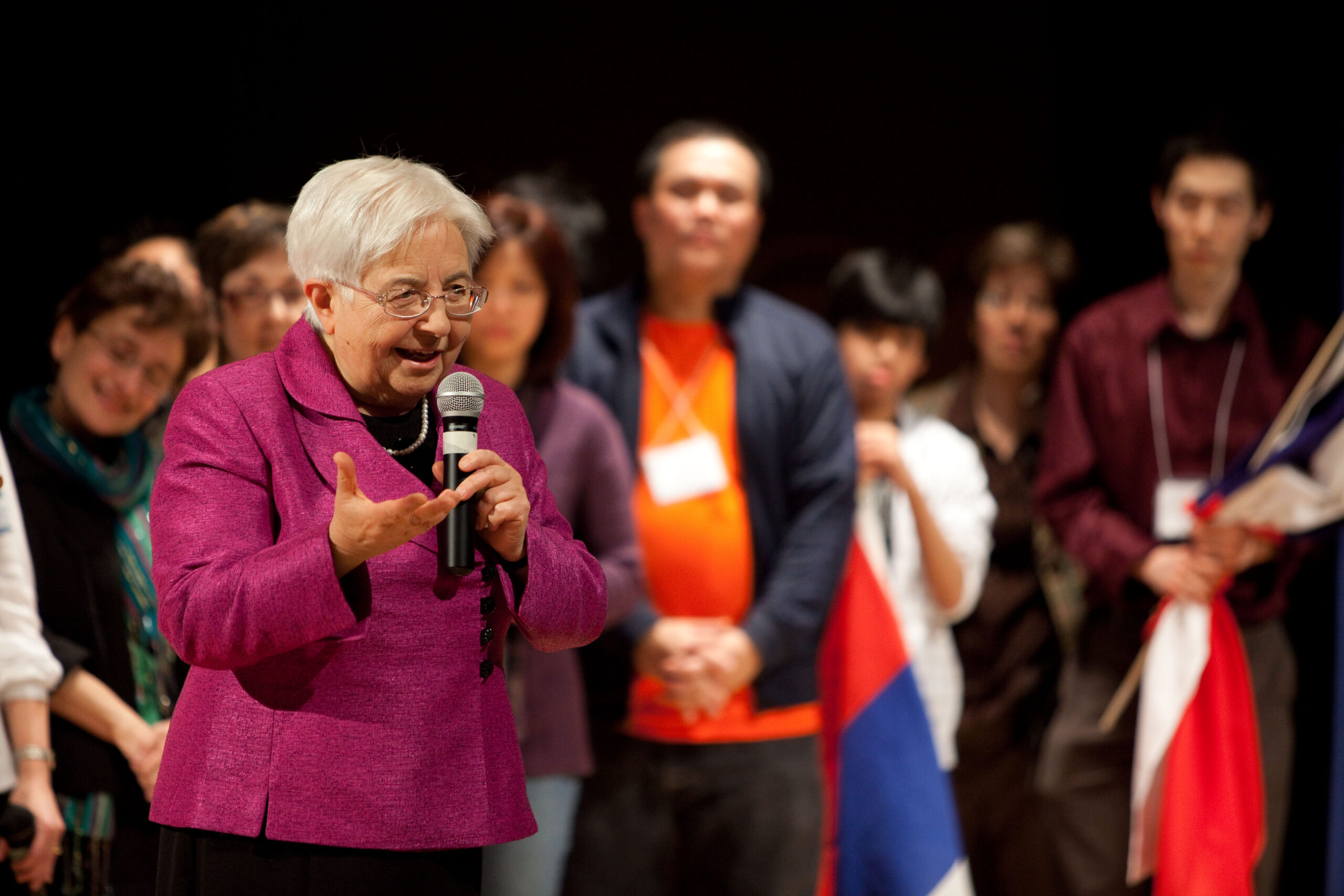
Take care of others
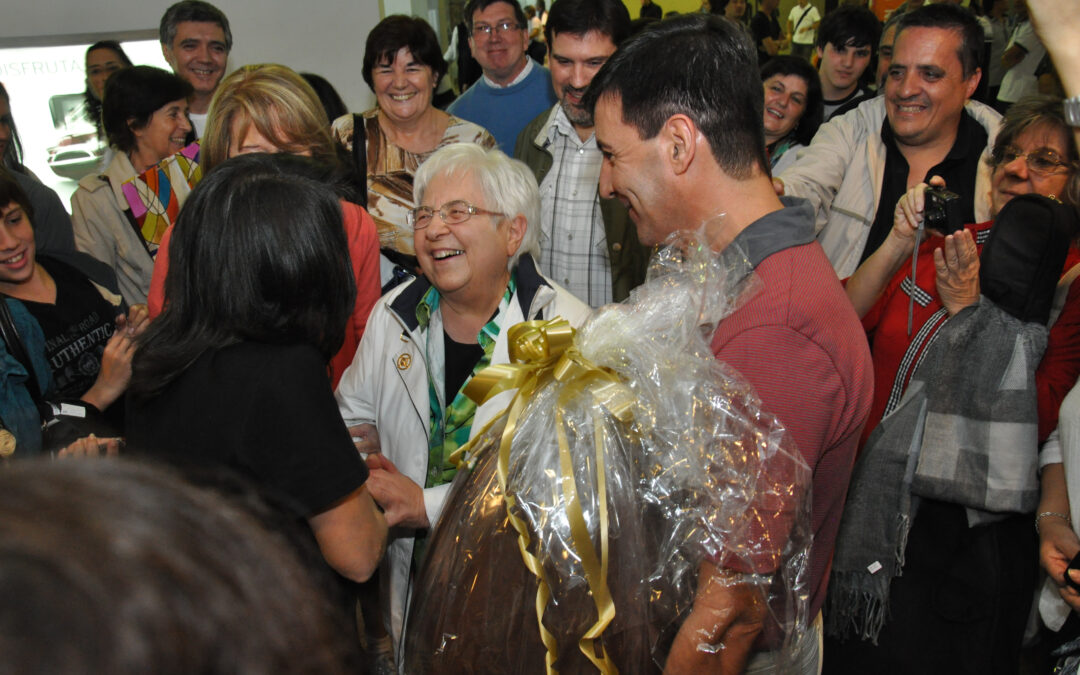
Maria Voce, the first president of the Focolare Movement (Work of Mary) after the foundress, Chiara Lubich, died yesterday at the age of 87 at home, in Rocca di Papa (Italy), surrounded by the affection and prayers of many.
This was announced yesterday evening by Margaret Karram, the current President to all those who belong to the Focolare Movement in the world.
In a message, Margaret went on to express the immense suffering that Maria Voce’s departure has brought about. She also expressed the fraternal and filial bond that bound them both together. “As the first president of the Focolare Movement after our foundress, she was able to take ahead with intelligence, farsightedness and the necessary determination the difficult transition of our Movement from its foundation to the post-foundation phase. She was able to combine her inspiring faithfulness to the Charism of Unity with the courage to deal with the many challenges of a worldwide association like ours, which operates on so many levels of human, social and institutional life.
Maria Voce received the name “Emmaus” as a life programme from Chiara Lubich, and it also became the programme of her government: to journey together, in a synodal way – and regardless of the questions and uncertainties that may emerge along the way, trusting in the presence of God in the midst of his people.
When I succeeded her as president of the Focolare Movement in 2021, she always accompanied me with a discreet but ever-present closeness and with her advice so full of Wisdom. In addition to her spiritual, theological and juridical preparation, she was also blessed with a deep and welcoming humanity and an engaging humour that was always respectful. Her human and sapiential calibre has been acknowledged by the most varied religious and civil authorities: from Pope Benedict XVI and Pope Francis; from the leaders of the various Churches to representatives of other religions and cultures.
A few hours before her departure to the next life, Jesús Morán and I were able to visit her for one last time. She was serene. I am consoled by the thought that waiting for her in heaven is the Virgin Mary, to whom she was closely linked by a very deep, and I would say existential, relationship.”
Jesús Morán, who lived alongside Maria Voce during the first six years of his service as Co-President of the Focolare Movement, recognises that with her election a new stage has begun for the Focolare Movement. He writes: “Emmaus, will go down in the history of the Movement not only as the first president of the post-Chiara Lubich phase, but also as the one who took the first innovative-organisational step of the Movement in the post-foundation era, in perfect creative faithfulness to the charism. In her first mandate, while Chiara’s absence was felt and could have caused discouragement, Emmaus travelled the world to strengthen the members and adherents of the Focolare communities in their commitment to a more fraternal and united world – in line with the charism of the foundress. In her second mandate, she began to prepare the Movement for the inevitable “crisis” phase appearing on the horizon, which Pope Francis identified as a great opportunity. And the Argentine Pope held her in great esteem. He pointed this out to her on every occasion. This demonstrates another of her characteristics: her ecclesial spirit.
I have always admired in Emmaus her simplicity, her inner freedom, her determination and her ability to discern, in which she was greatly aided by a legal background that she made her own.
Thank you, Emmaus, for saying a solemn “yes” at the most difficult time in our still short history. Mary will have taken you into her arms, presented you to her Son and together they will have carried you to the bosom of the Father who was the perennial source of your inspiration.”
I funerali si terranno lunedì prossimo, 23 giugno 2025, alle ore 15.00 presso il Centro internazionale dei Focolari a Rocca di Papa (Roma), via di Frascati, 306 – Rocca di Papa (Roma).(*)
Stefania Tanesini
Biographical information
Maria Voce was born in Ajello Calabro (Cosenza – Italy) on the 16th of July 1937, the first of seven children. Her father was a doctor and her mother, a housewife. In her final year of university studies in law in Rome (1959), she met a group of young focolarini at university and began to follow their spirituality. After finishing her studies, she practised law in Cosenza, becoming the first woman lawyer in the city’s court. She later studied theology and canon law.
In 1963, she was called by God to follow Chiara Lubich’s path, to which she responded with immediacy. In the Movement, Maria Voce is known as “Emmaus”, a name that refers to the well-known episode of the two disciples walking with Jesus after the resurrection. She herself describes how Chiara proposed it to her: “Chiara, confirmed an intuition that I had strongly felt within: that my life was to be spent so that those who had the opportunity to meet me would experience Jesus in the midst.” From that moment on, her commitment was to build bridges of unity, to the point of deserving God’s presence among people.
From 1964 to 1972 she was in the Focolare communities in Sicily (Italy) in Syracuse and Catania and from 1972 to 1978 she was part of Chiara Lubich’s personal secretariat.
In 1977 Chiara Lubich made an important visit to Istanbul (Turkey) where for years she had cultivated a special relationship with the Ecumenical Patriarchate of Constantinople. During those years, Maria Voce was in the focolare in that city, and she recalls: “It was a strong experience, both for the precious contacts with the various Churches, with Islam, and also because we felt that only Jesus among us made us strong when faced with the many problems of that land.”
In Istanbul, she established ecumenical relationships with the then Patriarch of Constantinople Demetrius I and numerous Metropolitans, including the current Patriarch Bartholomew I, as well as representatives of the various Churches.
In 1988 Chiara asked Emmaus to return to Italy to work at the International Centre in Rocca di Papa and for the Abbà school, the Interdisciplinary Study Centre of the Focolare Movement, of which she became a member in 1995 as an expert in Law. Since the year 2000 she has also been co-responsible for the International Commission of “Communion and Law”, a network of professionals and scholars involved in the field of Justice. From 2002 to 2007 she collaborated directly with Chiara in updating the General Statutes of the Movement.
On the 7th of July 2008, a few months after Chiara Lubich’s death, she was elected president of the Focolare Movement, reappointed for a second term on the 12th of September 2014. The style of her presidency has always been to “prioritise relationships” and to work towards the goal for which the Movement was born: to seek unity at all levels, in all fields, by following the path of dialogue. She has repeatedly emphasised how important dialogue is. “If there is an extremism of Violence,” she said in 2015 at the United Nations, in New York, “now we are responding in the same radical way, but structured differently, that is, with the extremism of dialogue.”
Numerous visits were made to all the continents to meet with the Movement’s communities spread around the world and to maintain contacts with civil and ecclesiastical, cultural and political, ecumenical and interreligious leaders. These were important steps to strengthen the bonds of friendship and collaboration established by the Focolare Movement and to encourage developments on the path of fraternity between peoples.
During her presidency, both with Pope Benedict XVI and Pope Francis, Maria Voce had meetings and audiences where expressions of esteem and fraternal affection emerged on both sides. On the 23rd of April 2010, Pope Benedict XVI received her in private audience. Referring to the spirituality of the Focolare Movement, the Pope spoke of a “charism that builds bridges, that creates unity” and invited the Focolare Movement to continue in its activities with ever deeper love and in striving for holiness. In October 2008, she participated and spoke at the Synod of Bishops on “The Word of God in the life and mission of the Church”. On the 24th of November 2009 Pope Benedict appointed her as Consultor of the Pontifical Council for the Laity and on the 7th of December 2011 as Consultor of the Pontifical Council for Promoting the New Evangelisation.
On the 13th of September 2013, Pope Francis received her in audience together with the then Co-President Giancarlo Faletti. About that moment, Emmaus remembers, “He immediately received us with a great welcome. He made me feel at home. I felt a great joy, as if I were standing in front of a father, but first and foremost he was a brother. I felt like his sister, and this sense has always remained.”
And on another occasion, she said, “Pope Francis has always encouraged us to go ahead, to welcome the signs of the times in order to make the charism relevant today, received for the good of many people and giving joyful witness to it”. One of these occasions was the Pope’s visit to the international little town of Loppiano (Florence, Italy) in 2018. Maria Voce was there to welcome him: “Holy Father, we have a very high goal, we want to “aim high”. We would like to make mutual love the law of coexistence, which means experiencing the joy of the Gospel and feeling that we are protagonists of a new page of history.”

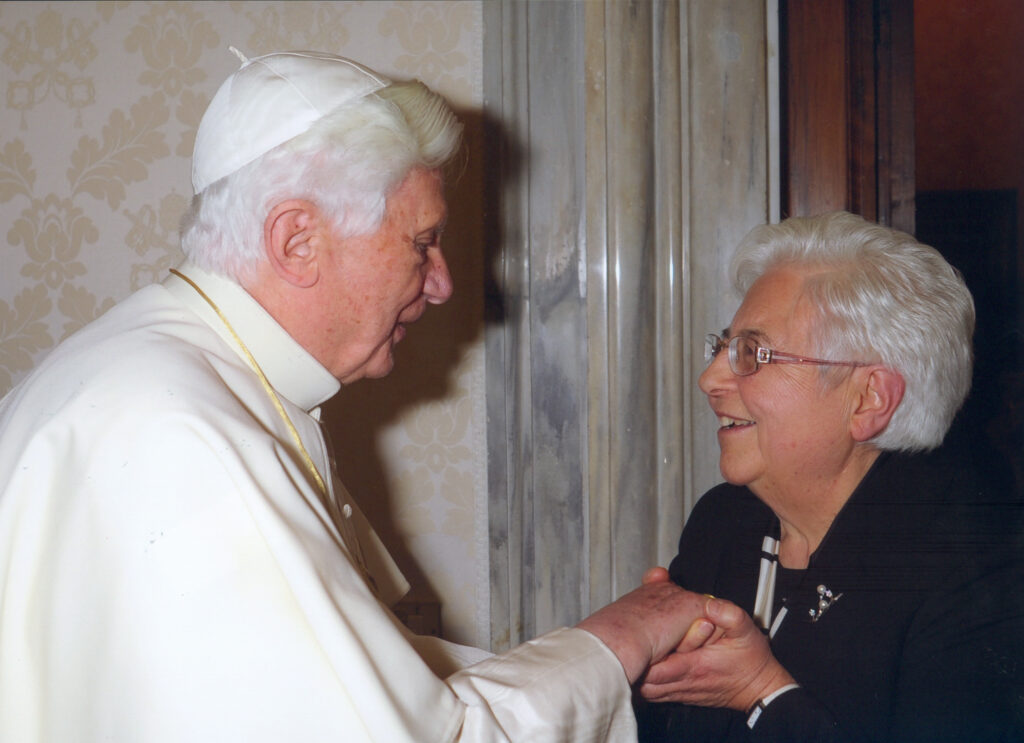
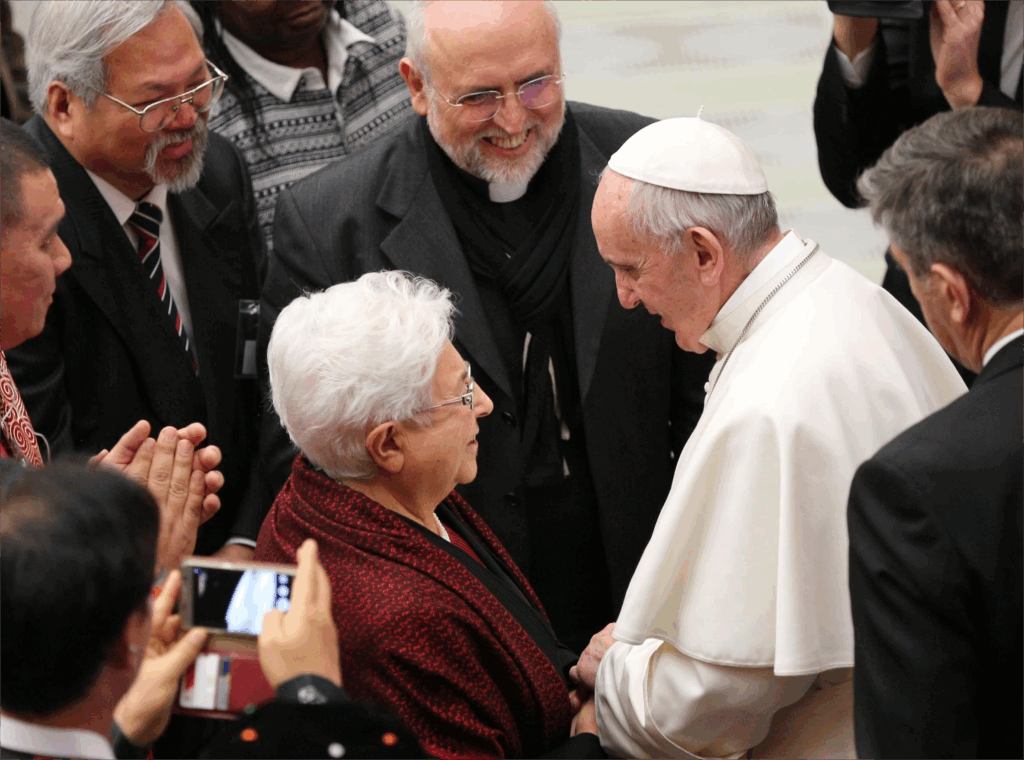
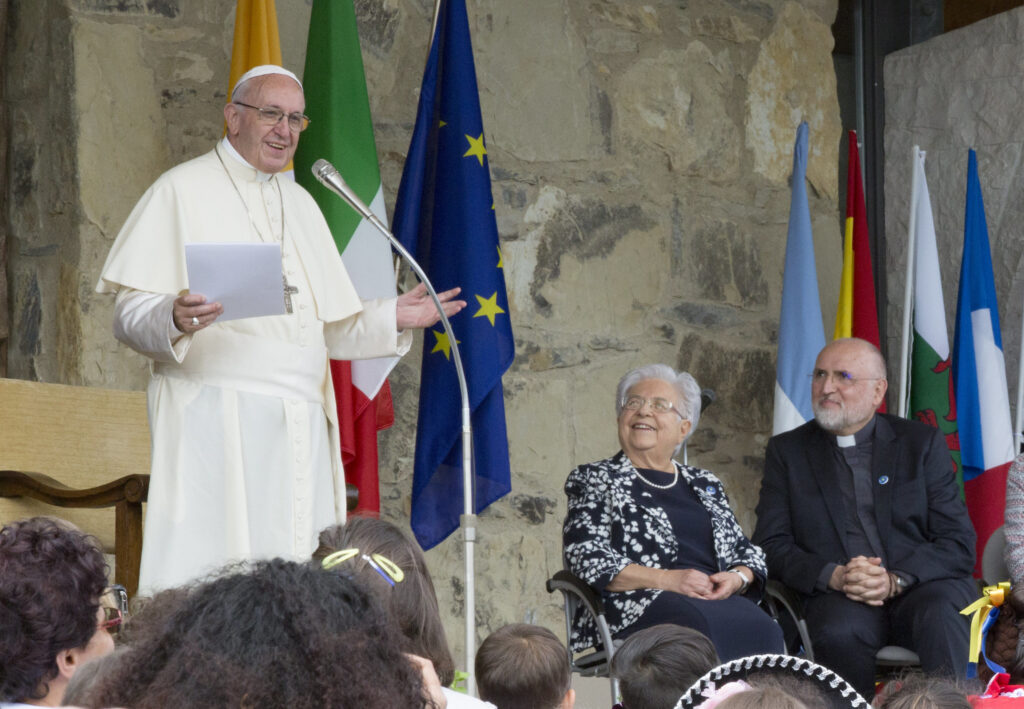
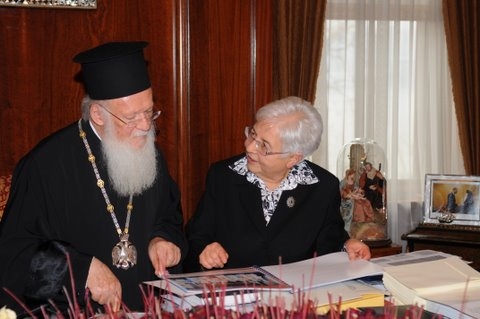
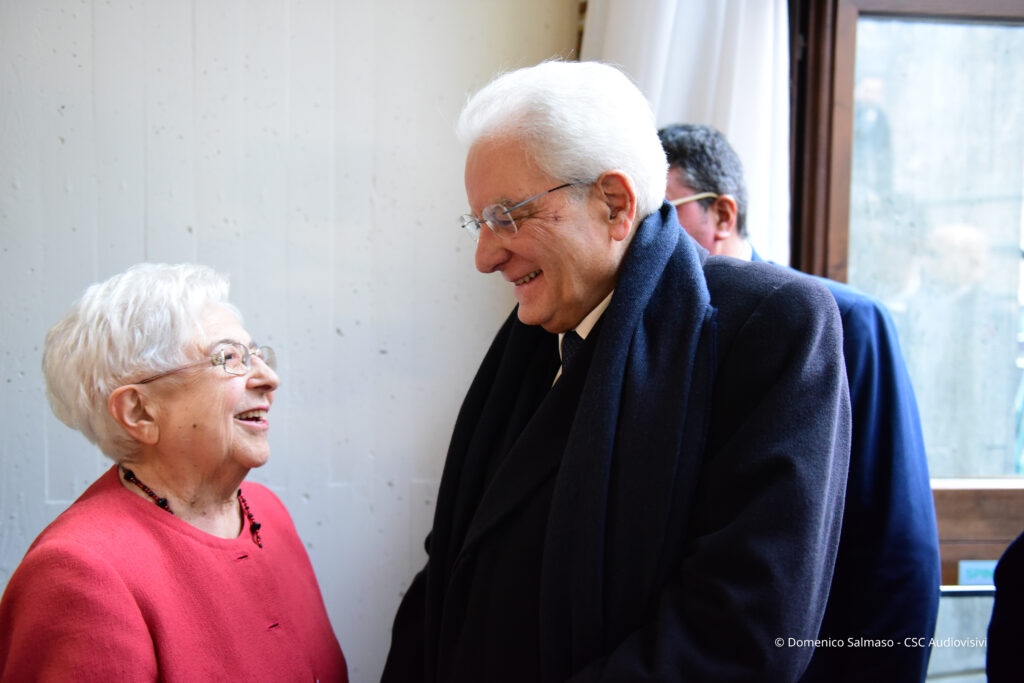
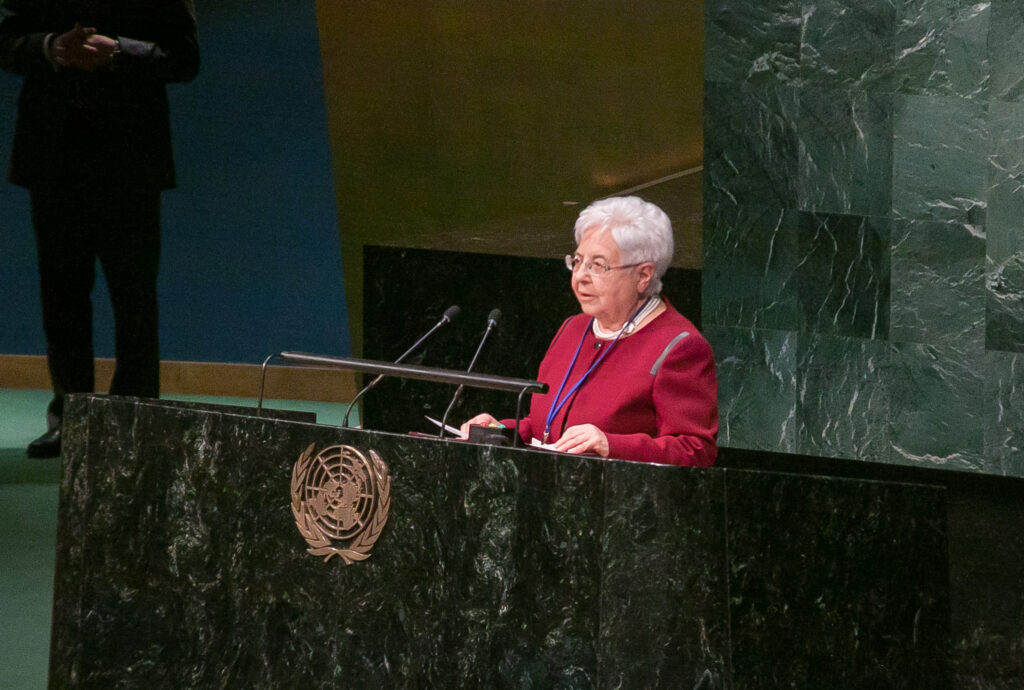
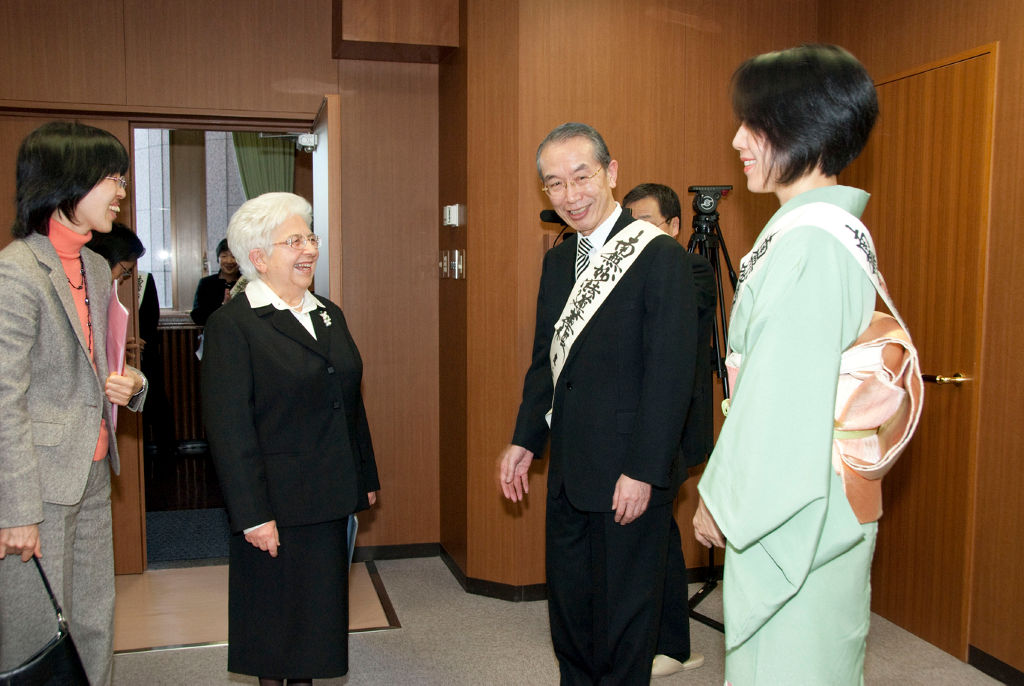
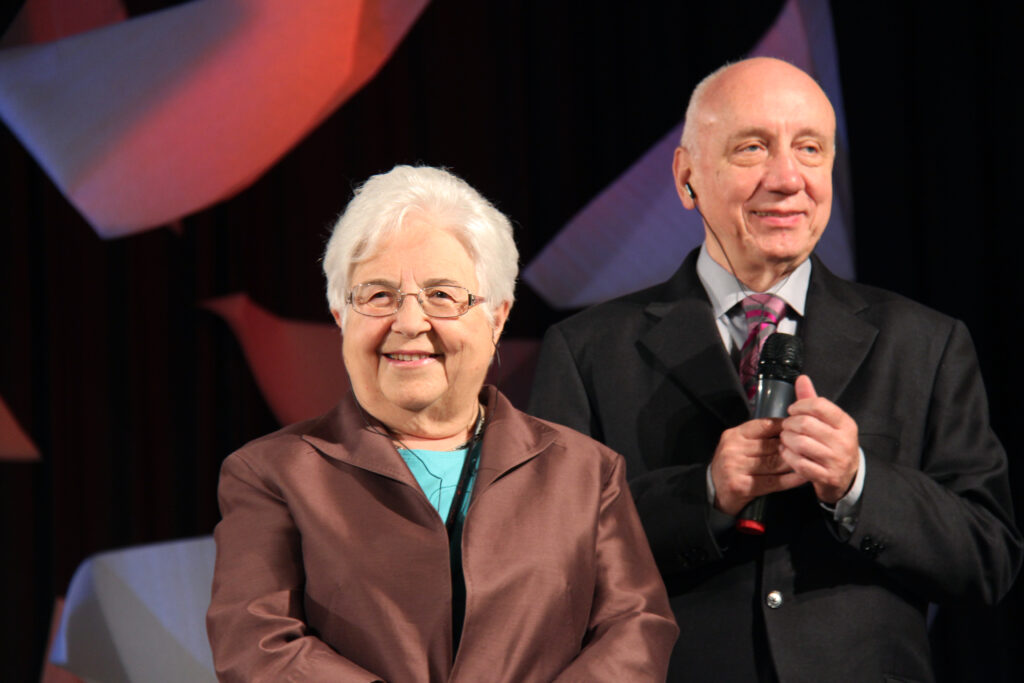
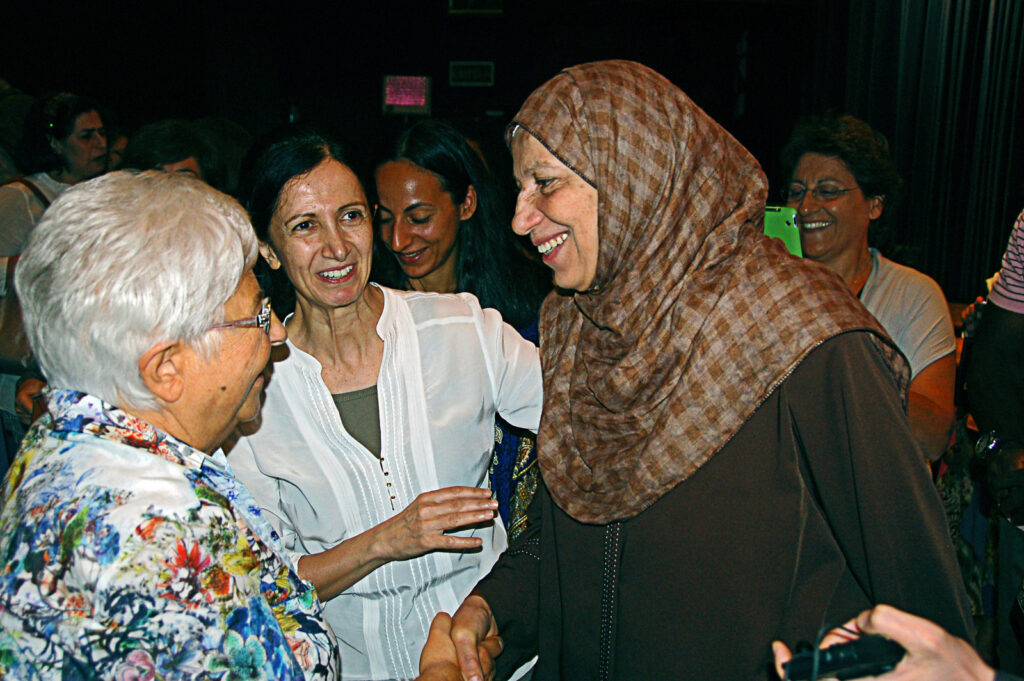
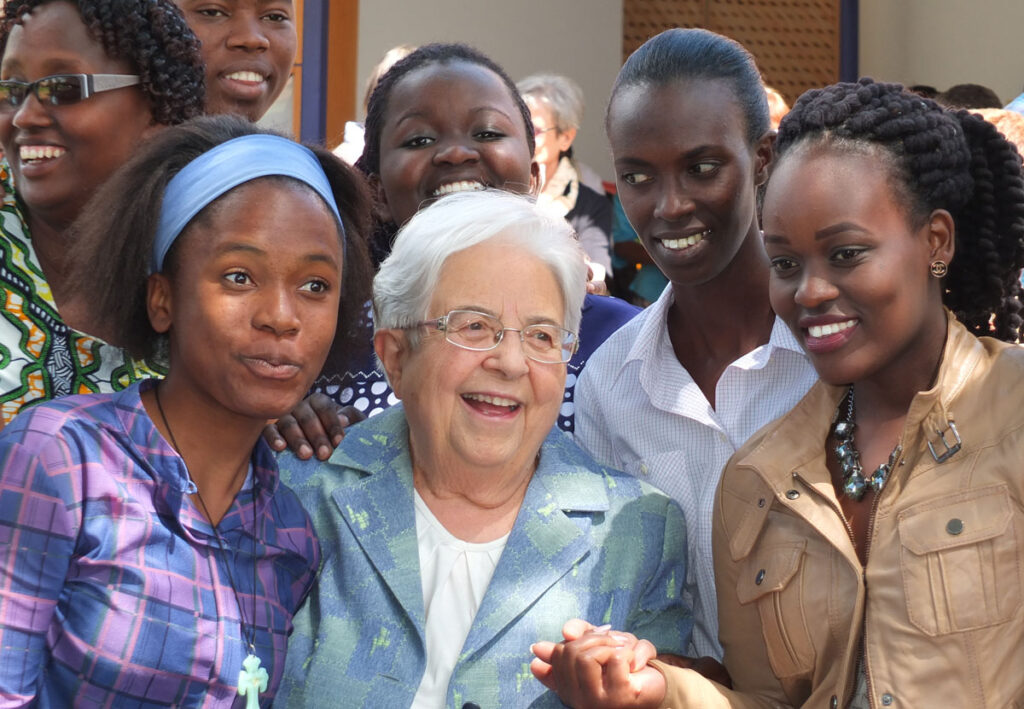
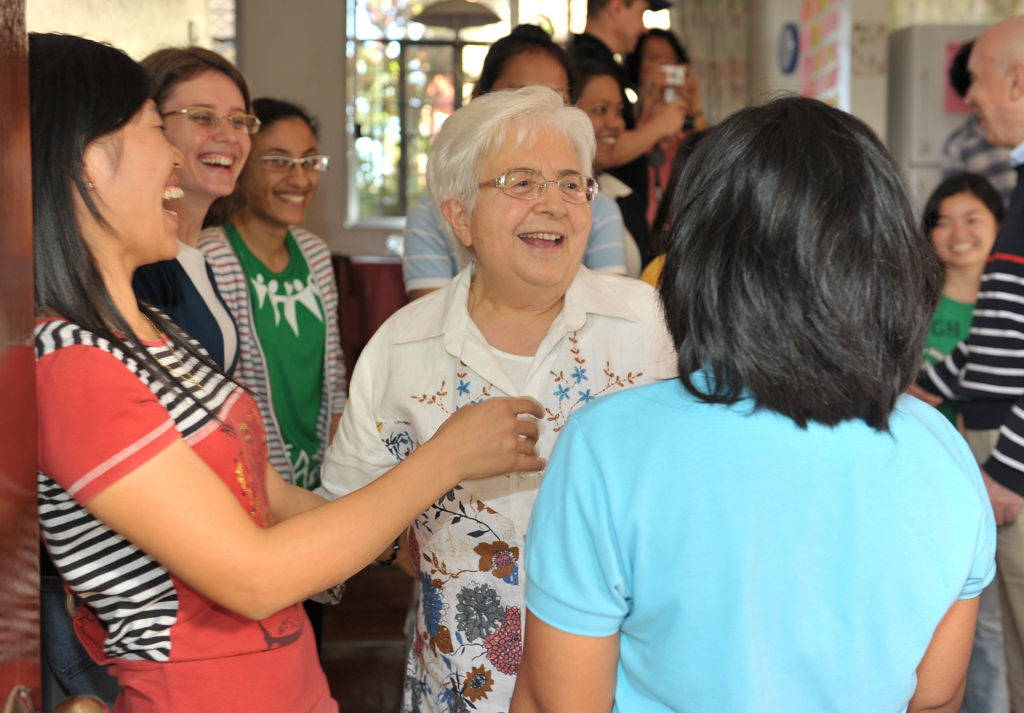
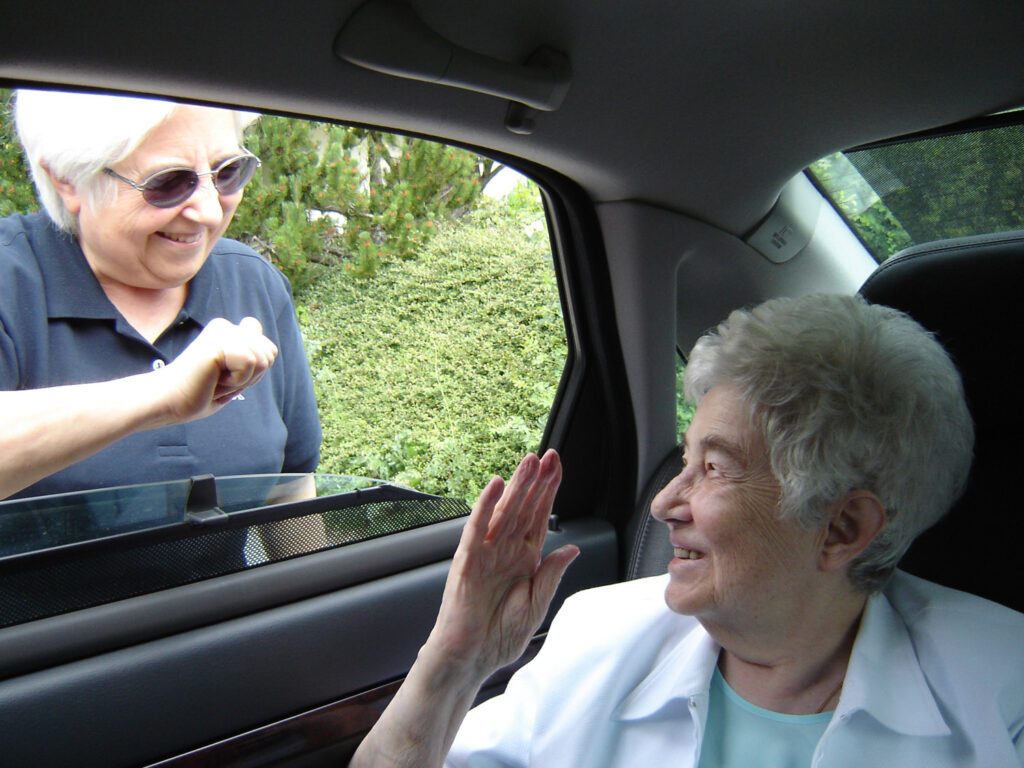
Live fully in the present
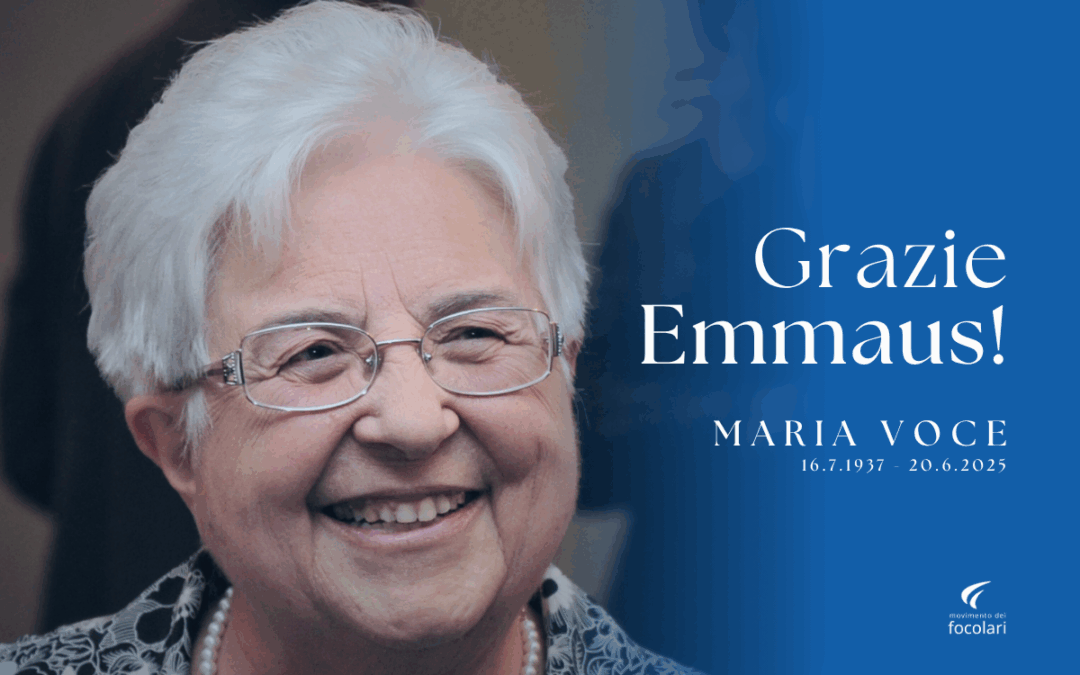
Dear everyone,
I am writing to you with great sorrow and profound emotion to inform you that today, at 5:22 p.m., God called to Himself our Emmaus, Maria Voce, the first president of the Focolare Movement after Chiara Lubich.
She concluded her holy journey in Rocca di Papa, in her home, surrounded by the care and love of the focolarine of her focolare and the prayers of us all. Today, in the early afternoon, Jesús and I were able to visit her for one last time. She was serene.
A great affection and immense esteem bind me to her because of her donation to God in the Work of Mary right to the end.
Since my election as President, her closeness, which was so discreet but ever present, always accompanied me, supporting me with her advice so full of Wisdom. She was present on the most varied occasions, celebrations, anniversaries, journeys; she assured me of her prayers, the offering of her life and often she would send me a gift, a flower or one of her poems.
She received the name “Emmaus” from Chiara, recalling the experience of the Risen Lord walking with us. This name characterised her whole life. Indeed, she affirmed: “How do we do the Work of God? With Jesus in the midst!”
Her inspiring faithfulness to Chiara’s charism, her courage in facing numerous challenges, and her belief in unity, in communion, remain etched in our hearts.
Her human, spiritual and sapiential calibre has been acknowledged by the most varied religious and civil authorities: from Pope Benedict XVI and Pope Francis; from the leaders of the various Churches to representatives of other religions and cultures.
Her funeral will be held on Monday, 23rd of June at 3.00 p.m. (Italian time) at the International Centre in Rocca di Papa.
Let us remain united in the love that binds Heaven and earth!
Margaret Karram
Rocca di Papa, 20 June 2025
Take a new look at the world around you

War is a mass murder, clothed in a kind of sacred cult, as was the sacrifice of firstborns to the god Baal: and this because of the terror it instils, the rhetoric with which it dresses up and the interests it serves. When humanity has progressed spiritually, war will be classified alongside the bloody rites, the superstitions of witchcraft and other barbaric practices.
It relates to humanity as sickness does to health, as sin to the soul: it is destruction and devastation, striking both soul and body, individuals and the community.
[…]
According to St. Thomas, “All things seek peace”. In fact, they all seek life. Only the insane and the incurable may desire death. And war is death. It is not wanted by the people; it is wanted by minorities to whom physical violence serves to secure economic advantages or, worse, to satisfy base emotions. Especially today, with its cost, its deaths and its ruins, war reveals itself as a “useless slaughter”. A slaughter which is moreover useless. A victory over life which is becoming humanity’s suicide.
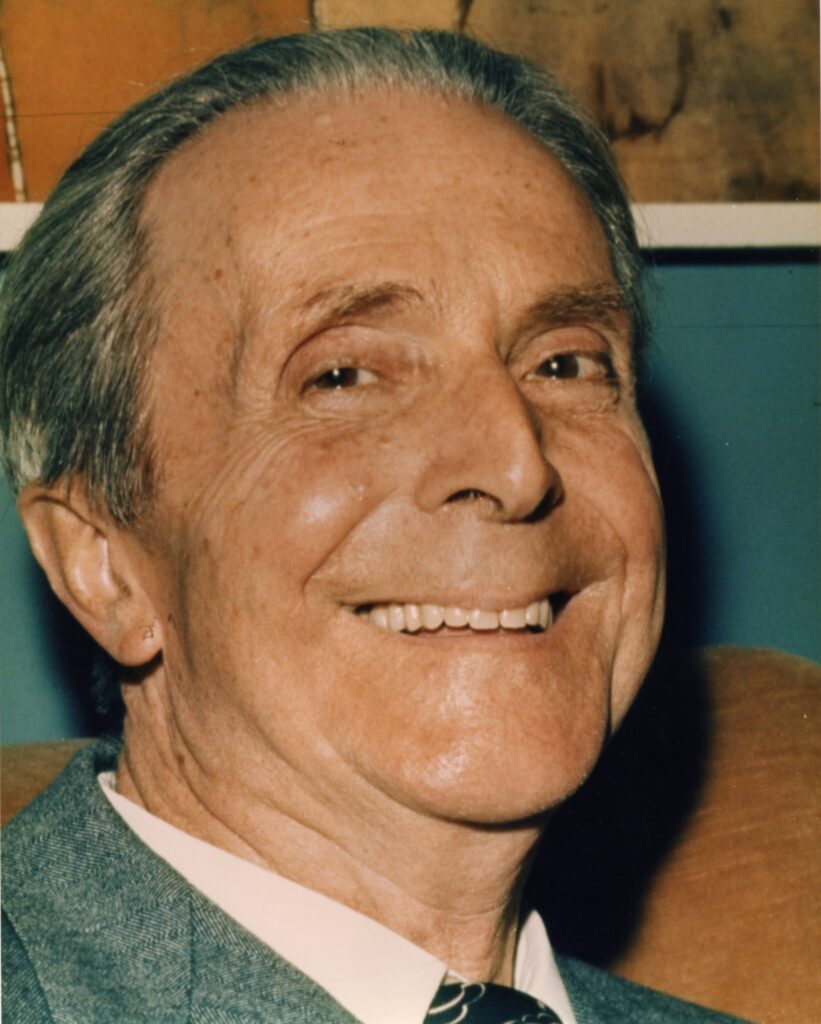
According to St. Thomas, “All things seek peace”.
In fact, they all seek life.
Only the insane and the incurable may desire death.
And war is death.
[…] Saying that war is a “useless slaughter “, Benedict XV gave the most precise definition. Cardinal Schuster called it, “a slaughterhouse of men.” It means whole regions destroyed, thousands and thousands of poor people without homes or possessions, forced to wander in the desolate countryside, until death cuts them down from hunger or cold.
[…] The material gains from a victorious war can never compensate for the damage it causes; so much so, that it takes several successive generations to painstakingly rebuild the full sum of spiritual and moral values that were destroyed during an excess of war frenzies[1]. ” […]
[…]
2uman ingenuity, destined for far nobler purposes, has today devised and introduced instruments of war of such power as to arouse horror in the soul of any honest person, above all because they do not only affect armies, but often still overwhelm private citizens, children, women, the old and the sick, as well as sacred buildings and major monuments of art! Who is not horrified at the thought that new cemeteries will be added to the countless ones of the recent conflict and new smoking ruins of towns and cities will pile up more mournful wreckage?» [2]. […] […]
Compiled by Elena Merli
Igino Giordani, L ‘inutilità della Guerra, Città Nuova, Rome, 2003, (third edition), p. 3
Foto: Cover: © RS via Fotos Públicas, Igino Giordani © CSC-Audiovisivi
[1] Card. Schuster, messaggio natalizio 1950.
[2] Pio XII, «Mirabile illud», 1950.
The fruit of justice is peace
Be in solidarity with everyone
Love everyone without distinction
Let gentleness prevail
God is love
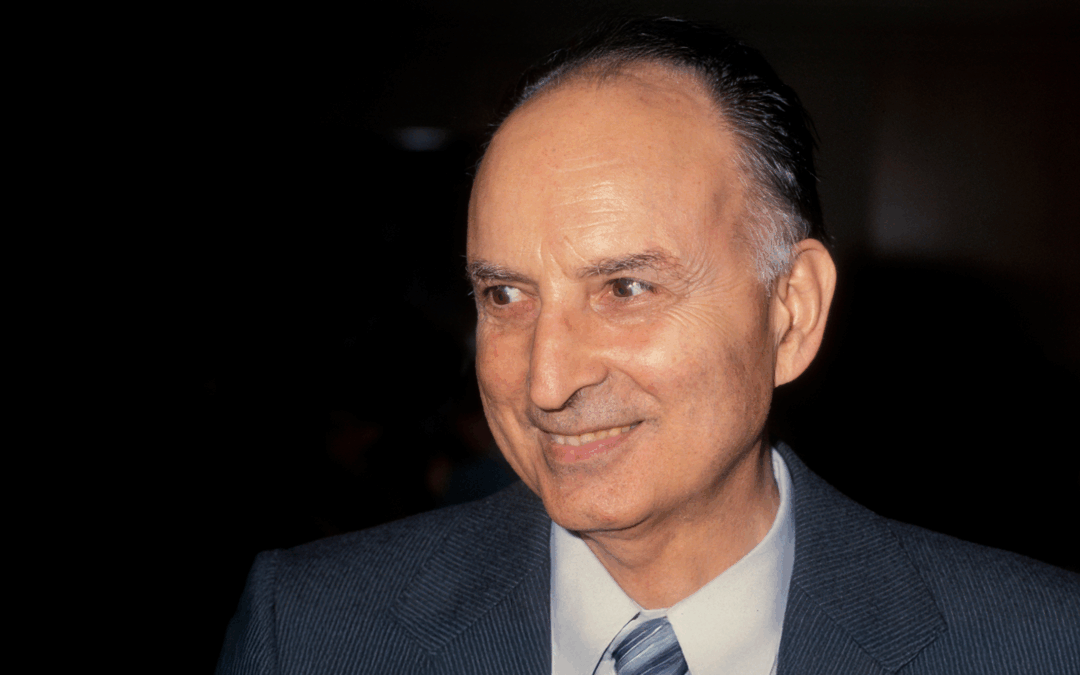
After the publication of the first part of Don Foresi’s biography dedicated to the initial period of his life, the second part entitled: “The rule and the excess” (published by Città Nuova), of the three planned, which deals with the years from 1954 to 1962, was also published. What do you think emerges in this volume as a characteristic note of this period of Foresi’s life?
A note that deeply characterizes the life and experience of Pasquale Foresi in the years indicated, can be expressed in this way: he was a free spirit, a person driven by a creative tension between charism and culture, moved by the need to spiritually and practically translate Chiara Lubich’s inspiration (the charism of unity) and the need, in a certain way, to give it theological, philosophical and institutional depth, in an ecclesial context that was still largely pre-conciliar. The book describes him very well as constantly engaged, together with Lubich, to “embody” the charism in forms understandable to the Church of the time and to the cultural and secular world in general. In this sense, we might define him, not only as a co-founder, but also as an ecclesial interpreter of the charism, someone who sought to make it “explainable” in the language of the Church and who tried to be the bridge builder between the mystical dimension of Lubich and classical theology, making it accessible to many without watering it down.
At the same time Foresi was an atypical intellectual and an original thinker. Although he did not leave any major systematic works (he did not see this as his particular task), he had a strong impact on the development of the Work of Mary (Focolare Movement), during the period of time described in the volume. This second book documents a dynamic existence, marked by a sense of urgency, as if the words of the Gospel proper to the development of the Focolare Movement had to be incarnated “immediately”, without delay.
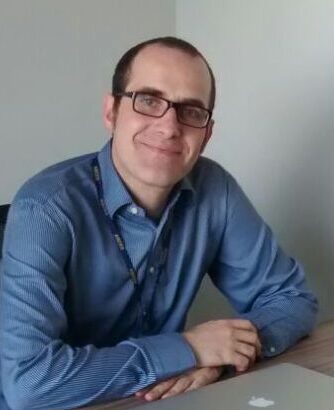
“Don Foresi, a free spirit, a person driven by a creative tension between charism and culture”.
Our interviewee, Prof. Marco Luppi, researcher in Contemporary History at Sophia University Institute in Loppiano, Italy
The 600 plus pages of the text deal not only with the events that concern the life of Foresi in the period under review, but also outline the life and history of Chiara Lubich and the Focolare Movement of those years, also focusing on stories and episodes in which Foresi was not present, as the author himself states. Why do you think the author made this editorial choice?
Zanzucchi includes events and developments not directly experienced by Foresi because his story is inseparable from the history of the Focolare Movement. Telling the context, the protagonists and the collective dynamics allows us to grasp the meaning of Foresi’s contribution, placing it within the living fabric of a communal experience. As he clearly states in his introduction, Zanzucchi views Foresi not only as a key player, but as a co-founder, that is, an essential and foundational element of the Focolare Movement. Consequently, Foresi’s biography is inseparable from the biography of the Movement. In other words, the author adopts an approach that we could define as an “immersive biography”: not a simple individual reconstruction, but a relational and contextual narrative, where the meaning of Foresi’s role emerges through a living dialogue with others (Chiara Lubich, Igino Giordani, ecclesial personalities, etc.) and with the collective history of the Movement.
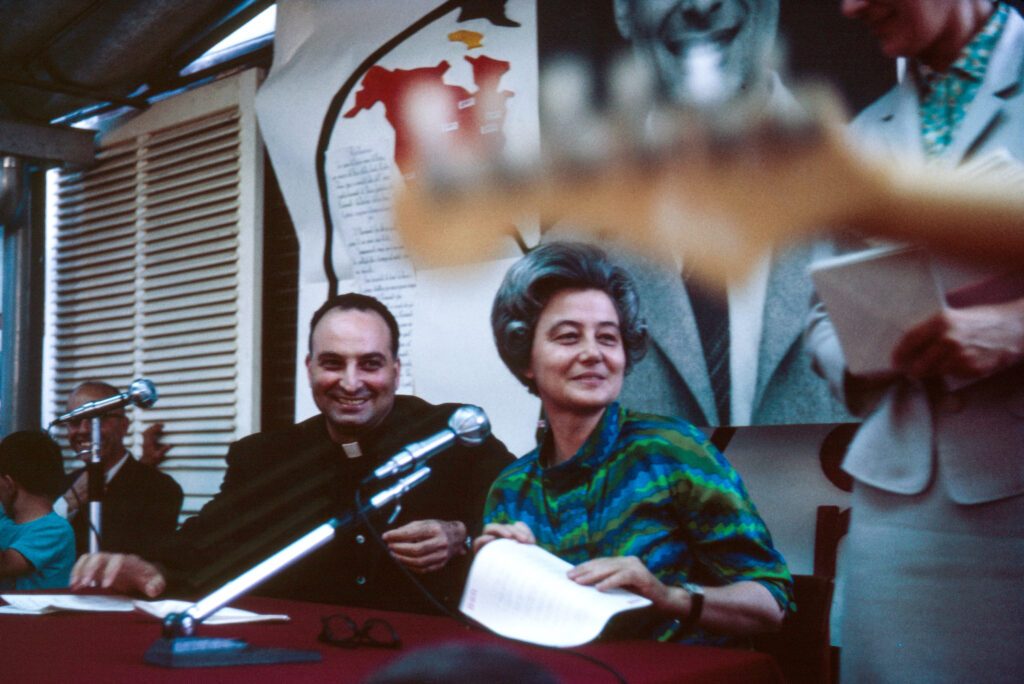
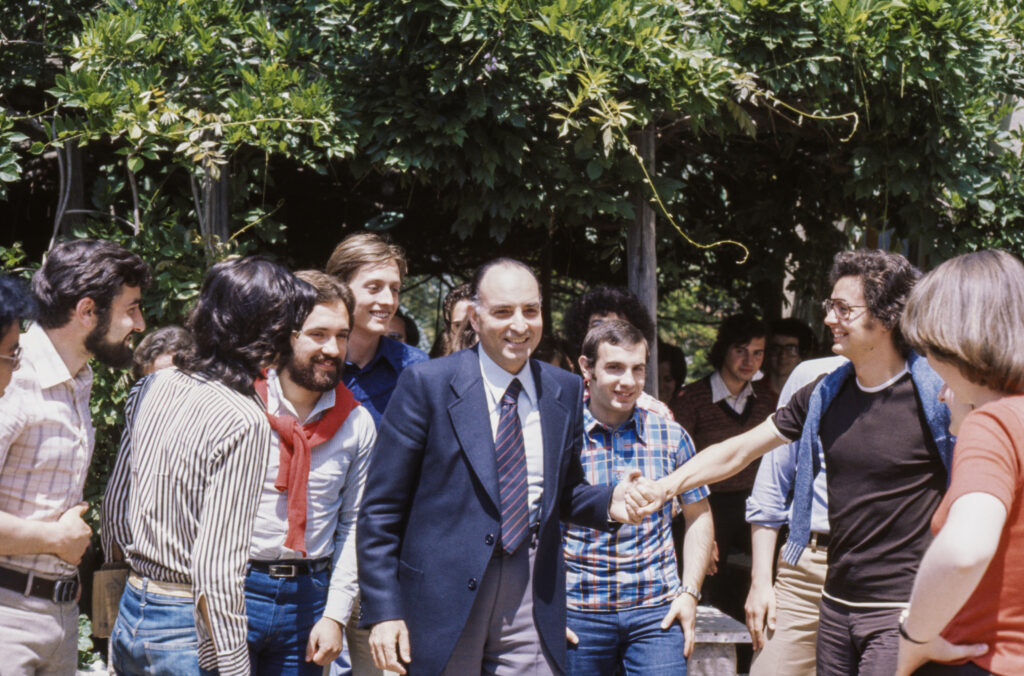
This work of Michele Zanzucchi is the first biography of Foresi. What aspects of Foresi’s life do you think deserve further study and historical investigation?
Zanzucchi often likes to say that he is not a pure historian, but rather a careful and conscientious storyteller and communicator and that therefore at times he has allowed himself some interpretative freedom, in order to clarify some passages that are less explicit. However, this is certainly a very important work and a first effort to give us a full view of the personality and experience of Foresi. It is one perspective and others will surely follow, all animated by that same critical spirit, open to multiple interpretations, which must inform the reconstruction of the history of the entire Focolare Movement and its key figures. I can mention three of the many insights that could be explored in future research on Foresi. First, his theological and philosophical thought. Zanzucchi points out that Foresi was not an academic theologian, but a “cultural visionary”, whose output is scattered in articles, speeches and notes. There is no single systematic presentation of his thought on key subjects such as the Church, the sacraments, the faith-reason relationship, etc. In addition, the originality of his ecclesiological thought should be studied, which anticipated some insights which later emerged in Vatican II. A second topic could be on the “political” role of Foresi and his relationships with the Roman ecclesiastical world. The author repeatedly mentions Foresi’s connections with the Vatican curia and with some ecclesiastical personalities. However, it is still not clear how much influence Foresi had in post-war political or ecclesial mediations, so this too would merit further exploration, especially during moments of tension with the hierarchy. Finally, a third, compelling front could be the editorial period and the “cultural laboratory” of Città Nuova. Zanzucchi underlines Foresi’s role as founder, director and inspirational force behind the “Città Nuova” magazine. What kind of “culture” did Foresi endeavour to promote? How did it position itself compared to other Catholic newspapers (Civiltà Cattolica, L’Osservatore Romano, Il Regno)? One day, a full monograph on Foresi’s work as a publisher and journalist in the context of 20th-century Catholic media will be needed.
a cura di Anna Lisa Innocenti
Photo: © Archivio CSC audiovisivi
Share your goods
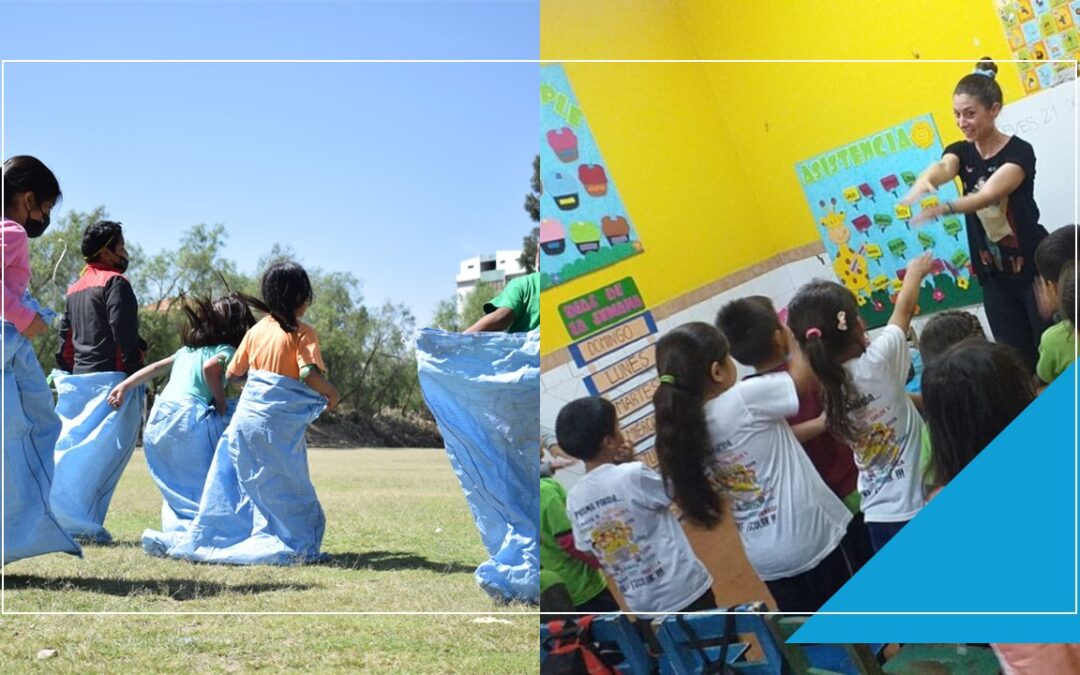
There are places in the world where fraternity is cultivated with a purpose. One of these is MilONGa, a project that has established itself as a key initiative in the field of international volunteering, aiming to promote peace and solidarity through concrete actions.
MilONGa offers a concrete alternative: to experience solidarity firsthand through experiences that transcend cultural, social and geographical boundaries.
Its name, which stands for “Mille organizzazioni non governative attive” (Thousand Active Non-Governmental Organizations) is much more than a project. It is a network that connects the youth with organizations in various parts of the world, giving them the opportunity to actively engage in social, educational, environmental, and cultural initiatives. Since its beginning, the program has grown by weaving a global community that recognizes common values: peace, reciprocity and active citizenship.
What distinguishes MilONGa is not only the diversity of its destinations or the richness of its activities but the type of experience it offers: a deep immersion in local realities, where each volunteer comes not to “help” but to learn, exchange, and build together. It is a comprehensive training journey that transforms both those who experience it and the communities that welcome them.
The countries where these experiences can take place are as diverse as the youth who participate, covering various latitudes: Mexico, Argentina, Brazil, Bolivia, Colombia, Ecuador, Paraguay, Uruguay, and Peru in America; Kenya in Africa; Spain, Italy, Portugal, and Germany in Europe; Lebanon and Jordan in the Middle East.
In each of these places, MilONGa collaborates with local organizations committed to social development and building a culture of peace, offering volunteers service opportunities that have a real and lasting impact.
Behind MilONGa is a solid network of international partnerships. The project is supported by the AFR.E.S.H.,initiative co-financed by the European Union, which allows it to strengthen its structure and expand its impact. It is also part of the New Humanity ecosystem, an international organization committed to promoting a culture of unity and dialogue among peoples.
A Story that Leaves a Mark
Francesco Sorrenti was one of the volunteers who traveled to Africa with the MilONGa program. His motivation was not just the desire to “help,” but a deeper need to understand and connect with a reality he felt was distant. “It was something I had inside me for years: a deep curiosity, almost an urgency to see with my own eyes, to try to get closer to a reality that felt far away,” Francesco recounts about his experience in Kenya.
His experience in Kenya was marked by moments that transformed him. One of these was a visit to Mathare, a slum in Nairobi. “When one of them told me: ‘Look, this is where my parents live. I was born here, my children were born here. I met my wife here and we will probably die here,’ I felt an overwhelming sense of helplessness. I realized that before doing anything, it was necessary to stop. That I wasn’t there to fix things, but to observe rather than turn away.”
He also experienced moments of joy while working with the children at a local school. “The joy of these children was contagious, physical. There was no need for many words: just being there, playing, sharing. It was then that I understood that it’s not about doing great things, but simply about being present,” he shares.
Two years after his experience, Francesco still feels its impact. “My way of seeing things has changed: I now value what really matters more and have learned to appreciate simplicity. This experience has also left me with a form of strength, an inner tenacity. You carry a kind of resilience, like what I saw in the eyes of those who, at dawn, wanted to do everything even if they had nothing.”
Meetings that Multiply Commitment
In April 2025, MilONGa participated in the international congress “Solidarity in Action, Builders of Peace” held in the city of Porto, Portugal. The meeting, jointly organized by AMU (Action for a United World), New Humanity and the Focolare Movement of Portugal, brought together young leaders from around the world linked to the Living Peace International and MilONGa programs.
For three days, Porto was transformed into a laboratory of dialogue and action, where young participants exchanged experiences, shared good practices, and built common strategies to strengthen their role as peace agents. MilONGa played a key role, not only through the active participation of its volunteers but also by creating synergies with other youth networks engaged in social transformation.
One of the most significant moments of the congress was the collaborative workshop space, where participants imagined and designed concrete projects with local and global impact.
MilONGa is defined not only by what it does but by the horizon it proposes: a fairer, more united and more humane world. A world where solidarity is not a slogan but a daily practice; where peace is not a utopia but a shared responsibility.
Manuel Nacinovich
Dry the tears of those who suffer
Spread trust around you
Take on the worries of others
Agree
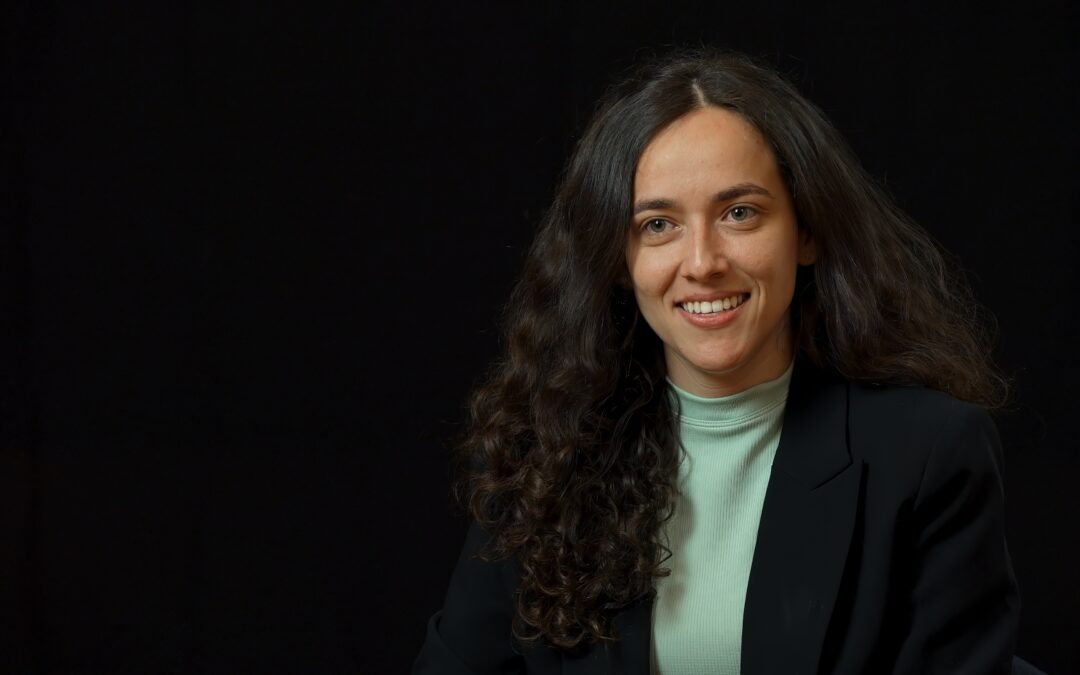
I come from a divided family background; I was born from an extramarital relationship of my father. Because of this, he kept my existence a secret, and for a long time—especially as a child—I experienced his temporary absence.
I felt there was something dark or hidden in my story. What I didn’t know was that Jesus would begin a process of radical conversion in my father’s life, one that would lead him to become a Pentecostal pastor.
My story and the sense of abandonment could very well have been reasons to turn away from faith. However, that is not what happened. Faced with the experience of abandonment, I couldn’t help but wonder about the kind of love that, even amid a child’s pain, had reached my father’s life. I often asked myself, “What kind of love is this, capable of piercing through the pain I’m feeling?” At age 16, during a high school graduation cruise, I encountered that love. One evening, sitting at the top of the ship, I clearly heard the Lord’s voice speak to my heart: “You weren’t born to do what your friends are doing, Mayara, you are mine.” Thanks to what began that night, I became a committed Pentecostal.
At the age of 19, I enrolled in the Pontifical Catholic University of São Paulo (Brazil) to study theology. In a story that only the Holy Spirit could write, I became President of the Academic Centre and of the Student Theology Commission for the state of São Paulo. I became good friends with some seminarians, had contact with various dioceses and religious orders and several priests often visited my home. At first, my mother joked, “I never imagined I’d have so many priests in my house, Mayara.”
Through that experience, I decided to write my final thesis on Christian unity. But as I began to explore what path to take, many things happened that led me to reflect on my family history. I went through a deep process of forgiveness and reconciliation. And so, as I forgave, I wrote. I always remembered how painful it can be to come from a divided family. But it was precisely in those moments that the Lord also asked me: “And my family, the Church?” I felt I could and indeed had to, join my experience of abandonment to that of Jesus.
“I decided to write my final thesis on Christian unity (…) and many things happened that led me to reflect on my family history. I went through a deep process of forgiveness and reconciliation.”.
In the photo: Mayara during the Ecumenical Congress
in Castel Gandolfo in March 2025
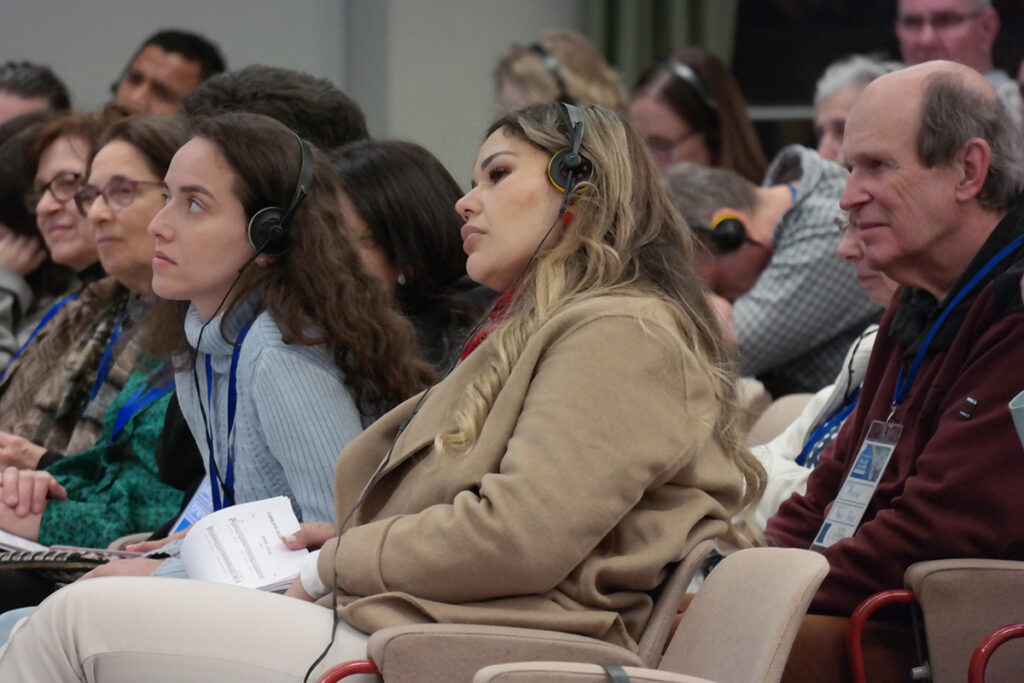
Drawing from the shared heritage of Sacred Scripture, I concluded that painful period with a thesis entitled: “The Spirit and the Bride Say: Come! The Figure of the Bride as a Prophetic Response to the Unity of the Church”. It was this step led me into Catholic-Pentecostal dialogue: with the Commission for Unity of the Catholic Charismatic Renewal-SP and the “We Are One” mission. Founded by laypeople within a Catholic community (Coração Novo–RJ), the We Are One Mission is based on a letter of intent signed by Catholic and Evangelical leaders that outlines four pillars for dialogue: respect for confessional identities, ecclesiality, non-proselytism and a culture of encounter. The city of Rio de Janeiro even officially recognizes a “We Are One Week” which has surprisingly been declared part of the city’s intangible cultural heritage.
In practice, the Mission brings together Evangelical, Catholic and Pentecostal leaders with a common purpose: to proclaim the unity of Christians. Theological dialogue was made possible by the creation of a national Catholic-Pentecostal working group (WG). Its aim is to reflect theologically and pastorally on the charismatic-pentecostal experience, starting from the Latin American context. We recently published our first report, the result of our meetings, on the gifts of the Holy Spirit. In 2022, the We Are One Youth Mission began, a group in which I am wholeheartedly and actively involved. For these reasons, I see the We Are One Mission as a sign of hope. First, for all the communion I’ve experienced and secondly, because my personal story is undoubtedly intertwined with it.
Entrusted with the role of being “pilgrims of hope,” I would like to conclude with a phrase my father often repeats when telling the story of our family. He says, countless times, that our story was born in pain and wounds but was bathed in God’s infinite love: “Tribulation became vocation.” When my father glimpses this reality, he always quotes St. Paul’s letter to the Romans: “Where sin increased, grace abounded all the more” (Romans 5:20). Paraphrasing this biblical text, during this 2025Week of Prayer for Christian Unity, in the year of the Jubilee and the celebration of many significant anniversaries such as the Council of Nicaea, I am encouraged and led to believe that: amidst so many deep wounds throughout the Church’s history, God is surely making His hope abound.
Mayara Pazetto
Photo: © CSC Audivisivi
Make time to listen
“You make all things new!”
Be open to hope
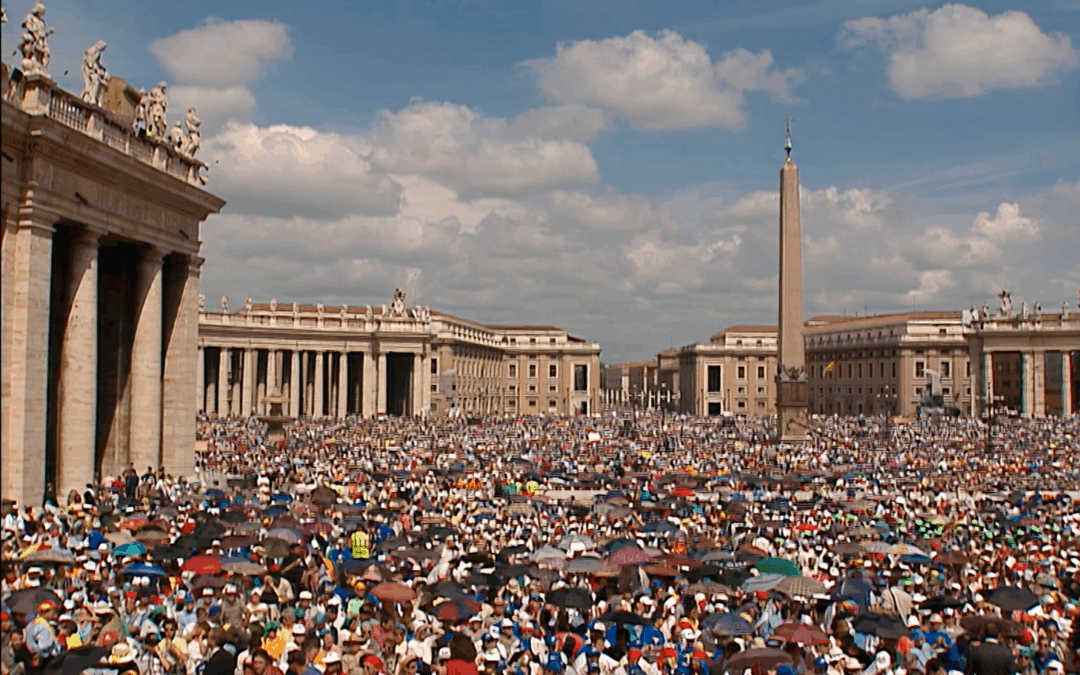
Enable subtitles and select your preferred language.
Be instruments of mercy
See who is nearby

Up2Me is a training and education program on affectivity and sexuality offered by the Focolare Movement. It started in 2015 as a response to the educational challenges facing the young generations of the third millennium. Today it is active in 35 countries around the world, with tailored paths for every age group: children with their families, pre-adolescent and adolescent children (with a parallel path for their parents) and young adults.
We spoke to Paolo and Teresa Radere, long-time educators, especially with Focolare’s younger generations, about the path suitable for children aged 4-8 years.
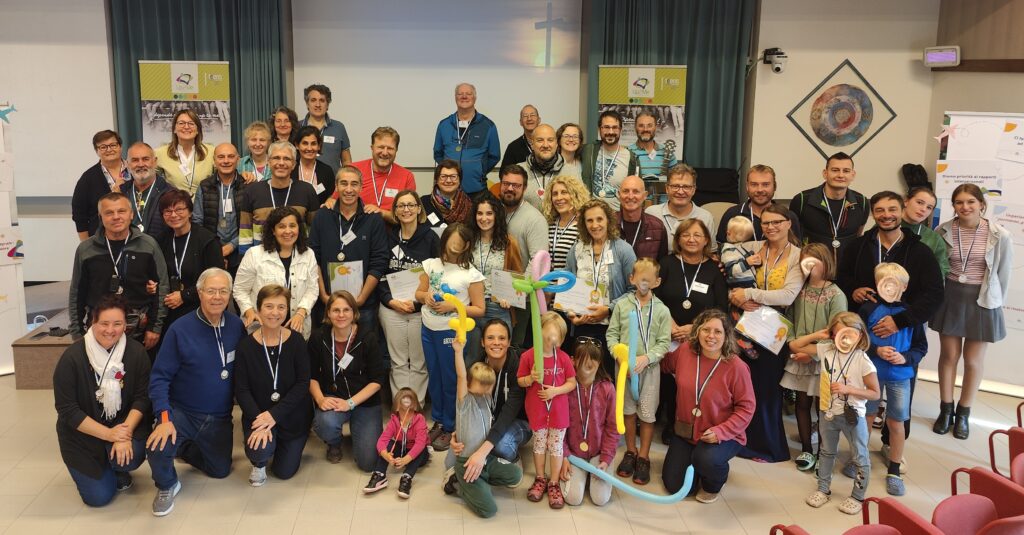
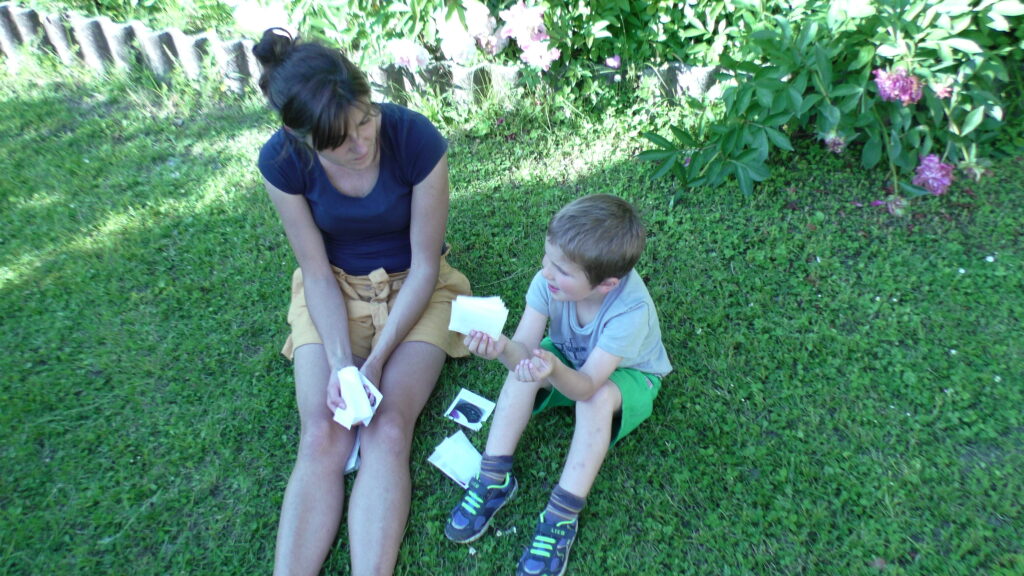
Paolo, Teresa, what is Up2Me for Children?
It is an experience that children can have with their parents, an itinerary for integral formation starting from the development of the emotional, affective, and sexual dimensions. It also engages the spiritual realm and existential intelligence, to foster from childhood a deep and open perspective on the world and others. The pathway promotes positive relationships, creativity in dialogue, acceptance, respect for each person’s uniqueness and a foundation for personal and communal growth and openness to others.
Who is it for?
It is open to all families with children aged 4-8 years. If, as happens in many families, there are older or younger children, participation in Up2Me is not a problem but an opportunity, because it is the whole family that has an experience. The course is also open to children in foster care, those with separated or single parents—in such cases, the child is accompanied by a trusted adult (one of the two natural or foster parents or both, an uncle, a grandparent ….).
The project can be run in family groups, parishes, or schools.
What are the objectives?
For children, the aim is to have shared experiences with their parents and other reference adults, which is necessary for the development of their identity and for an integral and harmonious growth. They learn to recognize, welcome and express in a context-appropriate way primary emotions with a positive value; experience good and effective communication with parents; develop interiority, self-knowledge, grow in the spiritual dimension – understood as the ability to contemplate and transcend, learn to take care of one’s body, others, nature.
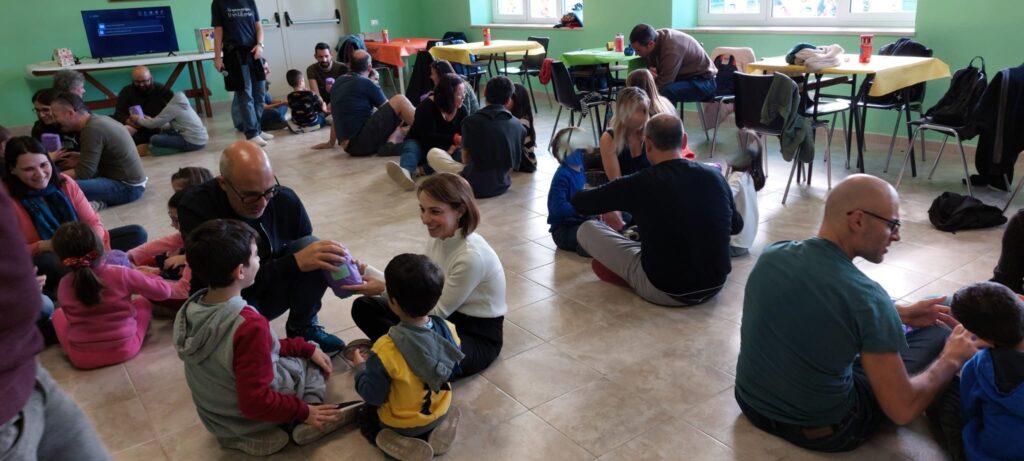
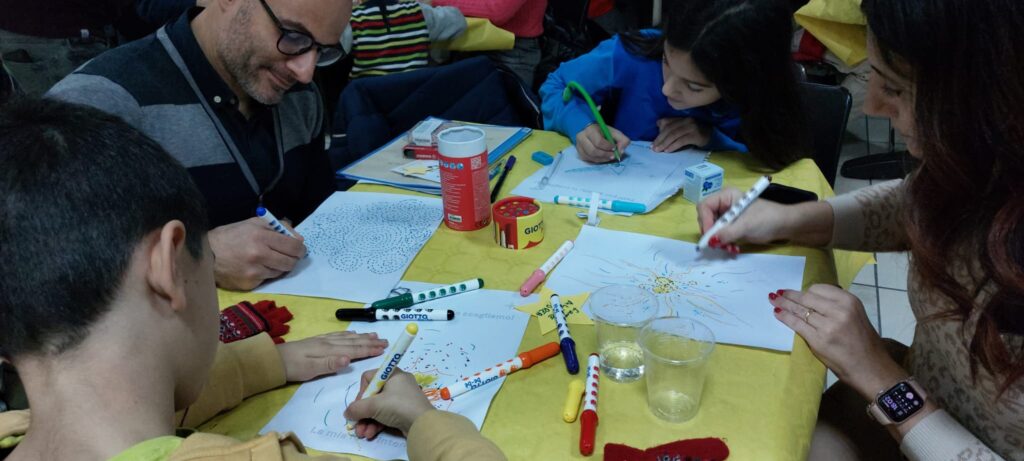
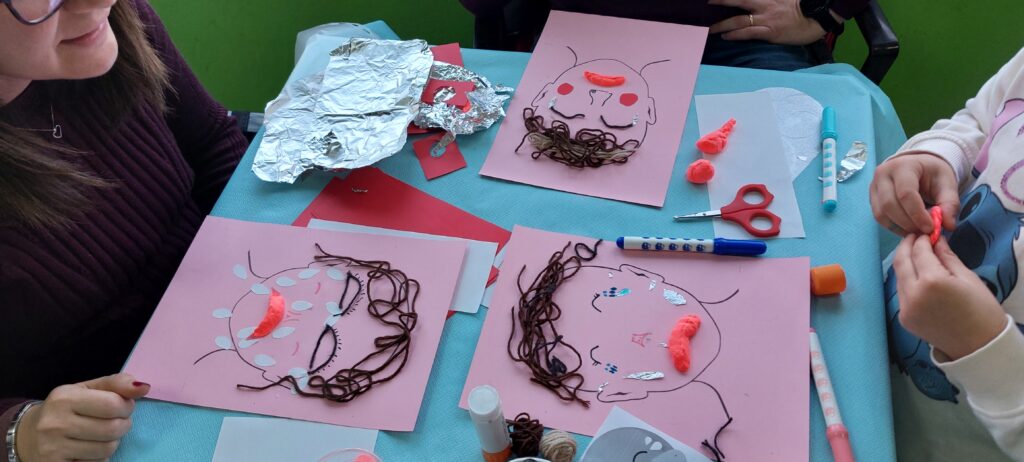
For parents, on the other hand, the course is useful in fostering growth in the ability to dialogue between generations within the family, between families and with contemporary culture to enhance their latent potential; to deepen knowledge about the child’s socio-cognitive and psychological development and the type of relationships that favour it; to understand how parents’ behaviour and relationship with their children affect their growth and learn good educational practices for emotional regulation; and to learn about the influence of new technologies in the upbringing of children and the role of parents in it.
What does the programme include?
From the experience and study of these years and to shape the path undertaken, we have chosen the metaphor of ‘a journey together towards happiness’. We have chosen to work on the emotional-relational education of children because this forms the basis of their affective and sexual relationship; emotions then allow the body and mind to be articulated, which favours integral personal growth. The experiential training method allows parents and children to share their daily experiences in community meetings, to dialogue, to deepen and enlighten, thus building a new knowledge that comes from their own wisdom and that of others.
The content is presented through a plurality of languages: play, movement, sensory, iconic representation, narration, images and dance as characteristics of the approach to the different themes.
The metaphor of a plane trip gives the child the image of the continuity of the journey, the sense of expectation and discovery, the need for work in preparation for the trip. After each stage the experience continues at home because each family unit is given a proposal that helps to continue the dialogue and the climate built with the aim of seeking spaces for growth as a family.
For more information click here or send an email to teresa.radere@focolare.org
Lorenzo Russo
Photo: © Archivio Up2Me
Value the positive
Overcome the obstacle of prejudice